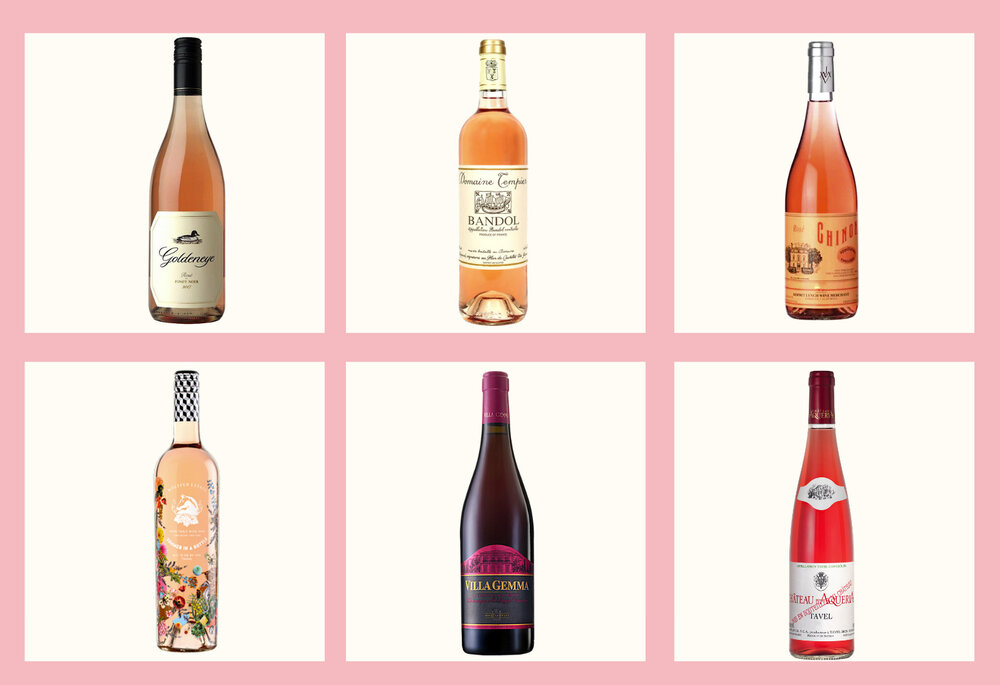
As we ease into Fall, I know you’re probably looking forward to embracing all the wonderful red wines that pair so brilliantly with the delicious dishes we look forward to during the chillier months. But since Fall doesn’t officially start until September 22nd and the temperatures are still soaring into the triple digits in most of the U.S. (please, make it STOP!), I have some delicious rosé recommendations to share that are going to help you make the transition seamlessly.
But lest you think these are the pale, rose petal pink Provençal rosés of Summer…think again! No, the wines in this post are located on the other end of the rosé spectrum. They’re the crimson-hued, deeply colored, pink wines that are packed with flavor and beautifully bridge the gap between the lighter rosés of Summer and the fuller-bodied red wines of Fall and Winter.
You might be surprised to learn that this spectrum of rosé wine even exists! Since the Provencal rosés have gotten so much press during the #RoséRevolution, many of the other beautiful shades of pink wine still remain well kept secrets. Well, that ends today and I’d like to encourage you to drink the rosé rainbow, and the wines listed here provide the perfect opportunity to do just that.
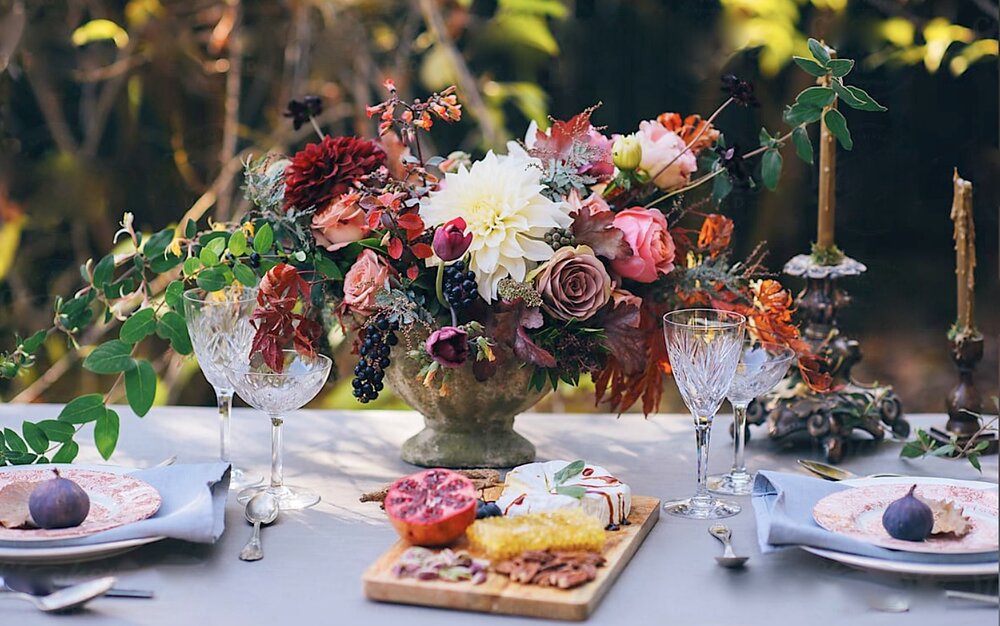
And because these rosés contain more color, flavor and tannin than their lighter counterparts, I like to call them “red wine drinker” rosés. Mostly because my die hard red wine lovers who generally despise wimpy Provencal rosés, positively LOVE the darker colored pink wines. But these wines are so user friendly, as we usher in Fall they can provide enjoyment to a variety of wine lovers. This is also a great way to get acquainted with some unfamiliar grape varieties including Nebbiolo, Mourvedre and Negroamaro which make some truly brilliant pink wine.
So go forth, scroll down and enjoy these recommendations and if you have any questions about anything you read here, please let me know in the comments section below.
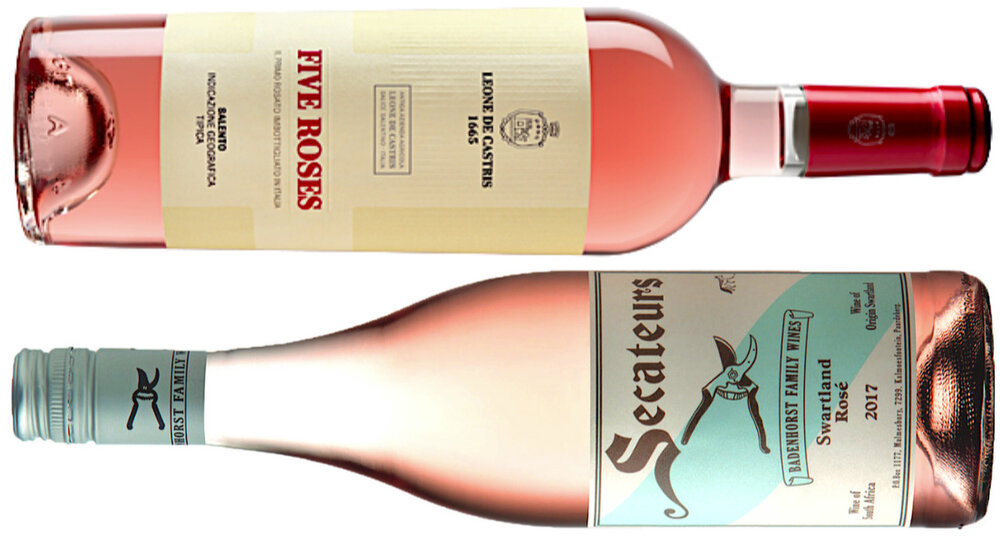
Leone de Castris Five Roses Salento Rosato, Puglia, Italy ($16): In Italy, rosé goes by the name “rosato” and this one represents the very first pink wine to ever be bottled and sold in Italy back in 1943. The current vintage is a blend of 90% Negroamaro, a dark, thick-skinned, red Italian grape with blackish-violet skin that produces wines with medium-plus tannins, and 10% Malvasia Nera, a blending grape that brings additional color and aromatics to the finished wine. The end result is a delightfully dry, medium-bodied rosato with notes of baked plum, cherry and spice with a delightful herb and spice-tinged finish.
A.A. Badenhorst Secateurs Rosé, Swartland, South Africa ($14): If you’ve been following my recommendations lately, you know I’m obsessed with the Secateurs wines. They offer an incredible value for the price and their rosé is no exception! This savory blend of 90% Cinsault and 10% Shiraz will keep you coming back for more with enticing notes of wild strawberry, watermelon and earth accentuated by a tangy, balsamic finish. And just FYI, this wine gets its gorgeous deep pink hue from 2 hours of contact with richly colored Shiraz grape skins.
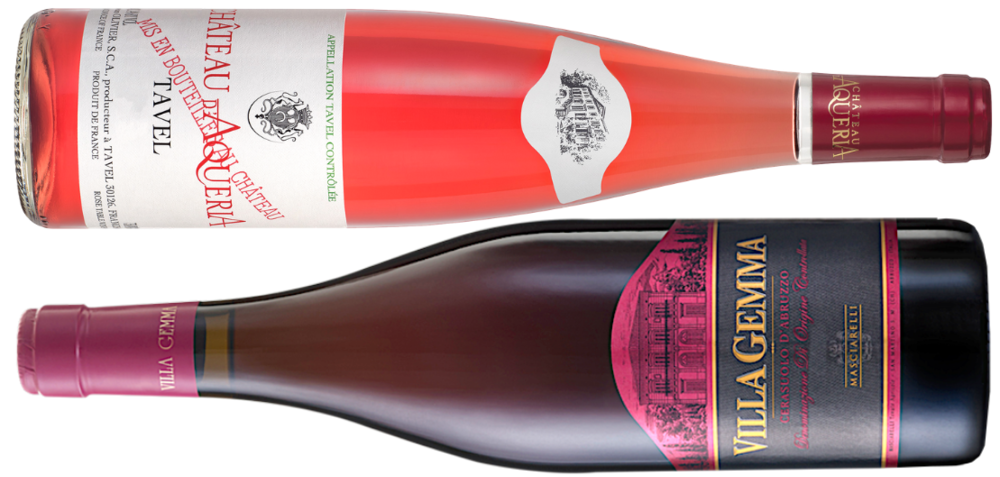
Masciarelli Villa Gemma Cerasuolo d’Abruzzo, Abruzzo, Italy ($18): Established in 2010, the Italian Cerasuolo d’Abruzzo DOC is strictly dedicated to the production of rosato wine. It’s an appropriate name since “Cerasuolo” means “cherry red” which refers to the deep, translucent crimson color the wine has from very brief skin contact with the highly pigmented Montepulciano grape. As a big fan of this producer (check out this delightful pairing), I love this hearty gem that’s sure to delight those who enjoy a more mouthfilling style of rosé with notes of wild cherry, raspberry and herbs accentuated by lovely tannins.
Chateau D’Aqueria Tavel Rose, Rhône, France ($22): This deeply colored pink wine hails from France’s Southern Rhône, specifically, from Tavel, the first AOC ever established in France in 1936. This is a Grenache-based blend that includes other indigenous red and white grapes from the region including Grenache Blanc, Clairette, Cinsault, Mourvèdre, Syrah and Bourbolenc. As a rosé that’s closer to an actual red wine, it has a dazzling, deep ruby-red color and fragrant aromatics of red berries and spice. On the palate, ripe juicy flavors of cherry and ripe berries strawberry, cherry, peach,

Charles Joguet Chinon Rosé, Loire Valley, France ($22): Hailing from France’s Loire Valley, this rosé comes from well known producer Charles Joguet and embodies the beauty of the region’s signature red grape, Cabernet Franc. This medium-bodied, lively rosé, crafted from 100% Cab Franc, exhibits enticing aromas and flavors of raspberry, rose and cherry accompanied by savory herbal notes of lavender and thyme. Red wine lovers will adore this wine’s depth of flavor, slight grip of tannins and spice tinged finish that round out the experience.
Round Pond Estate Rosato di Nebbiolo, Napa Valley, California ($24): When I first tasted this wine at a trade tasting years ago…I was immediately intrigued! It was clearly no wimpy rosé and to this day, this California “rosato” exhibits tremendous depth of flavor and that delightful hint of grip that only tannins can provide. Crafted from 100% Nebbiolo, the same red grape responsible for the legendary Barolos and Barbarescos of Italy’s Piedmont region, this wine has aromas and flavors of blood orange, watermelon, strawberry and spice framed by a food friendly acidity and fine grained tannins.
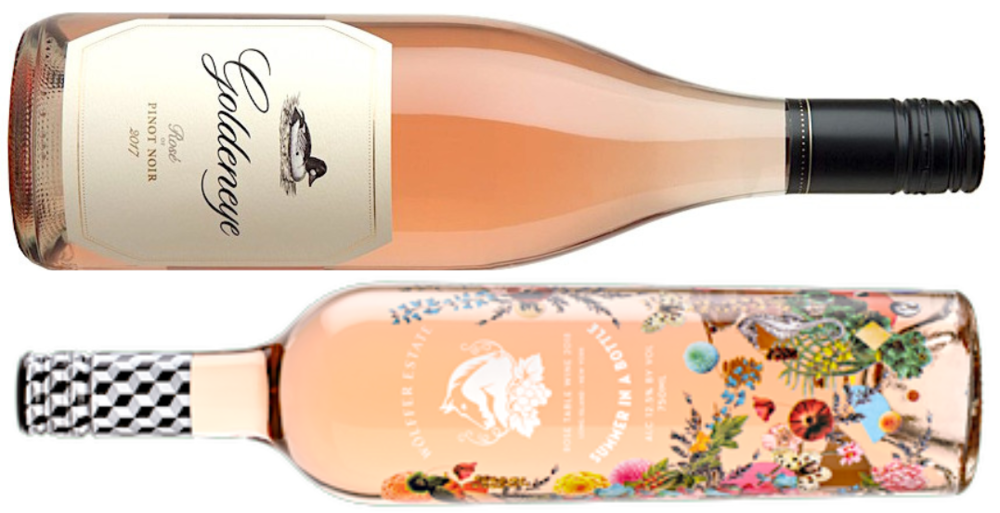
Goldeneye Rosé of Pinot Noir, Anderson Valley, California ($25): This gem from the legendary, California-based Duckhorn portfolio, has been one of my best sellers since last season! This delightful rosé is a blend of 90% Pinot Noir and 10% Pinot Meunier, and while crafted from relatively reserved grapes, this sophisticated rosé seduces with layers of flavor featuring notes of white peach, orange peel, strawberry and spiced pear. The fruit is accentuated by a lively, yet graceful acidity and a lengthy, spice-tinged finish.
Wölffer Estate “Summer in a Bottle” Rosé, Long Island, New York ($26): Hailing from Sagaponack, NY in the bucolic glory of the Hamptons this rosé is a creative blend of 40% Merlot, 22% Chardonnay, 12% Cabernet Sauvignon, 7% Gewürztraminer, 6% Cabernet Franc, 4% Pinot Meunier, 4% Pinot Blanc, 3% Riesling and 2% Sauvignon Blanc. As the sheer number of grapes might suggest, this delightfully aromatic wine is packed with flavor exhibiting notes of blood orange, guava, spiced pear and strawberry accompanied by a fabulous, food-friendly acidity and fine-grained tannins.
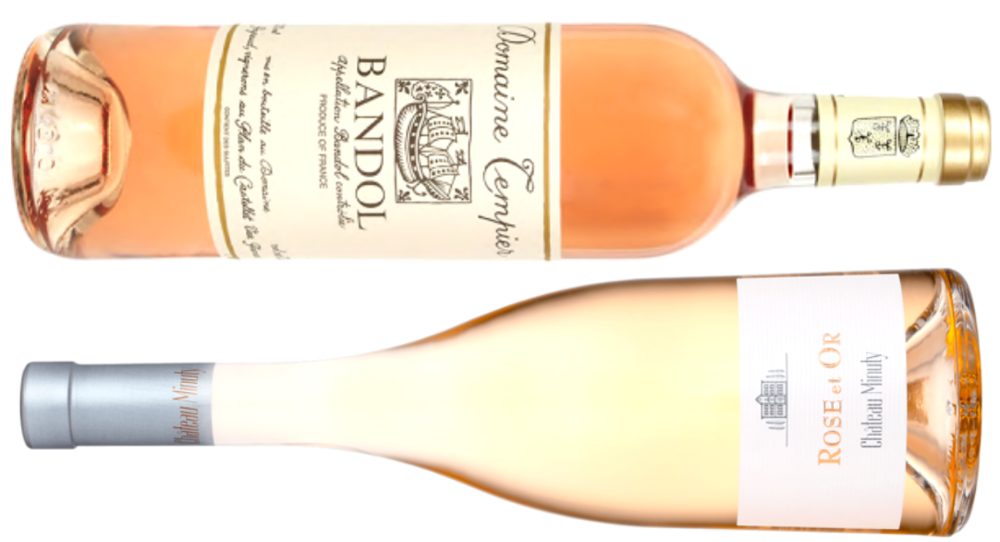
Domaine Tempier Bandol Rosé, Provence, France ($40): The pale color of this rosé from this iconic, Provençal producer belies the fabulous flavor you’ll discover in your glass. Crafted primarily from Mourvèdre, the region’s signature red grape, with a bit of Grenache and Cinsault added for good measure this refreshing wine delights on the palate with complex aromas and flavors of blood orange, tart cherry and peach accentuated by a lovely minerality and notes of savory rosemary, lavender that conjure the terroir of this beloved wine region.
Chateau Minuty Côtes de Provence Rosé et Or, Provence, France ($45): Hailing from the South of France with vines planted on the Saint-Tropez peninsula overlooking the stunning Côte d’Azur this delightful bottling is a blend of the winery’s signature grape, Grenache, with a splash of Cinsault. This wine delivers enticing, fragrant aromas of candied citrus, red berries and white flowers while on the palate intense flavors of pink grapefruit, white peach and wild strawberry are accentuated by a bright acidity and a crushed limestone and citrus-tinged finish.
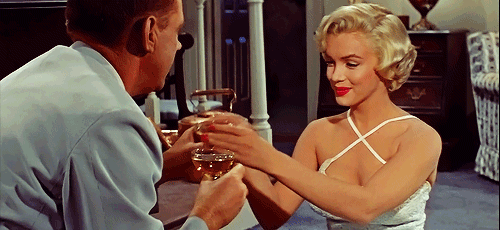
I only drink Champagne on two occasions, when I am in love and when I’m not.
Champagne is one of the most luxurious wines in the world. It’s high price tag and French pedigree are part of the reason but, equally so is its enduring association with some of the most glamorous people in history. Iconic fashion designer Coco Chanel, King Louis XV’s paramour, Madame de Pompadour, and legendary actress Marilyn Monroe were all huge fans who were known to passionately extoll the gloriousness of this sparkling elixir.
But Champagne is fascinating from a technical perspective as well.
From the intricate way it’s made to the rich history of the region it comes from, Champagne is truly the unicorn of the wine world and this essential Champagne 101 guide will demystify this vinous treasure for you and reveal all the basic fundamental information you need to know. And if you just so happen to be on a quest to broaden your vinous horizons and increase your knowledge base in the world of wine, be sure check out my White Wine 101 and Red Wine 101 posts as well.
But first things first.
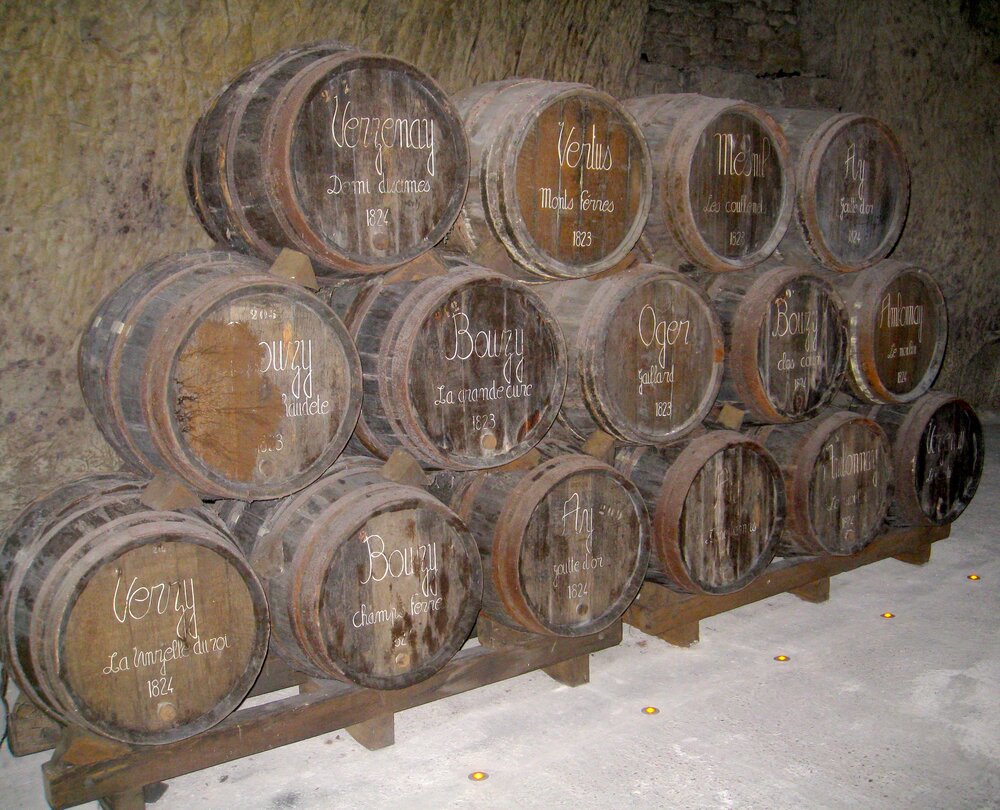
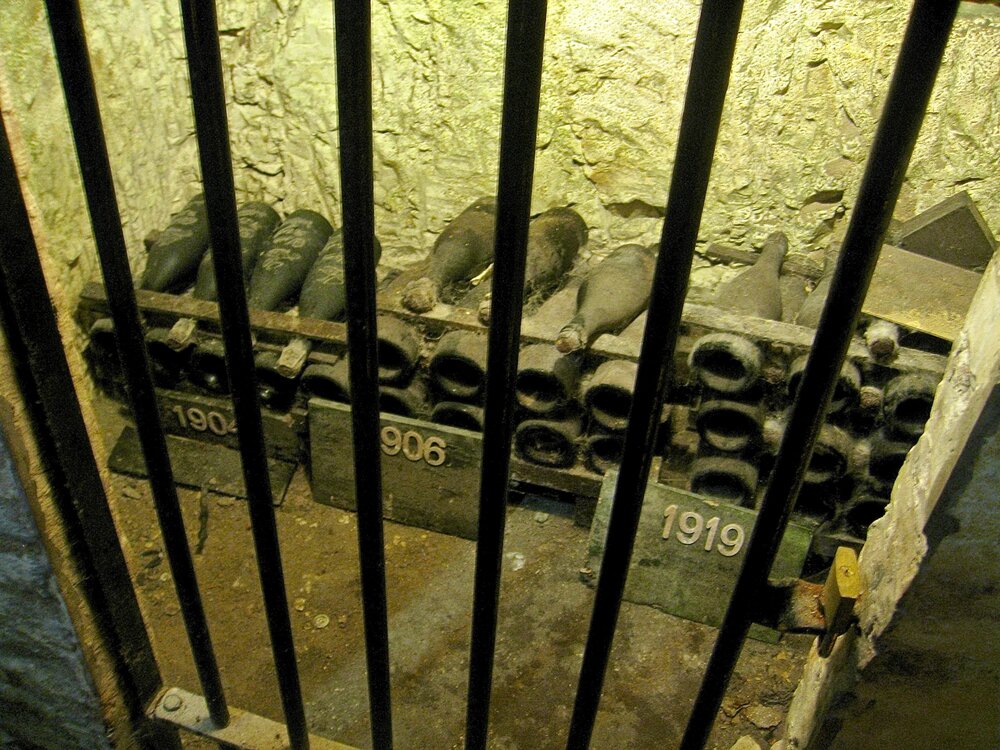
In ANY discussion about Champagne it's important to note that while ALL Champagne is sparkling wine, NOT ALL sparkling wine is Champagne. Only sparkling wine from the actual Champagne region of France can be called Champagne. So even if a sparkling wine is made using the same grapes and the same method as Champagne but it comes from outside the geographic region, by law it cannot be called Champagne.
And if you try to call it that, they will sue you.
Yes, the Champenois are litigious…but for good reason. In the early days of California wine country, the habit of featuring the term “California Champagne” on bottles of sparkling wine became pretty widespread. Eventually, the Comité Interprofessionnel du vin de Champagne (aka the CIVC), the governing body of the Champagne region, took umbrage at this vinous appropriation and took action. Well, sort of.
While all Champagne is sparkling wine, not all sparkling wine is Champagne.
The “Treaty of Versailles” was drafted in 1919 following WWI and it addressed this issue among many others, however, the treaty was never ratified by the United States which was in the midst of Prohibition at the time, so it hardly seemed relevant. Once Prohibition ended in 1933, however, U.S. wine producers were still free to continue to legally use the term “Champagne” on their bottles, much to the chagrin of the Champenois.
Thankfully, over the years many New World winemakers began using the term “sparkling wine” instead of Champagne on their sparkling wine bottles and in 2006 the U.S. and the European Union finally signed a wine trade agreement. In it, the U.S. agreed to no longer allow any new uses of certain place names on wine bottles, however, anyone who already had an approved label such as Cook’s, Korbel, André and Miller High Life were grandfathered in and are still allowed to use the Champagne name to this day.
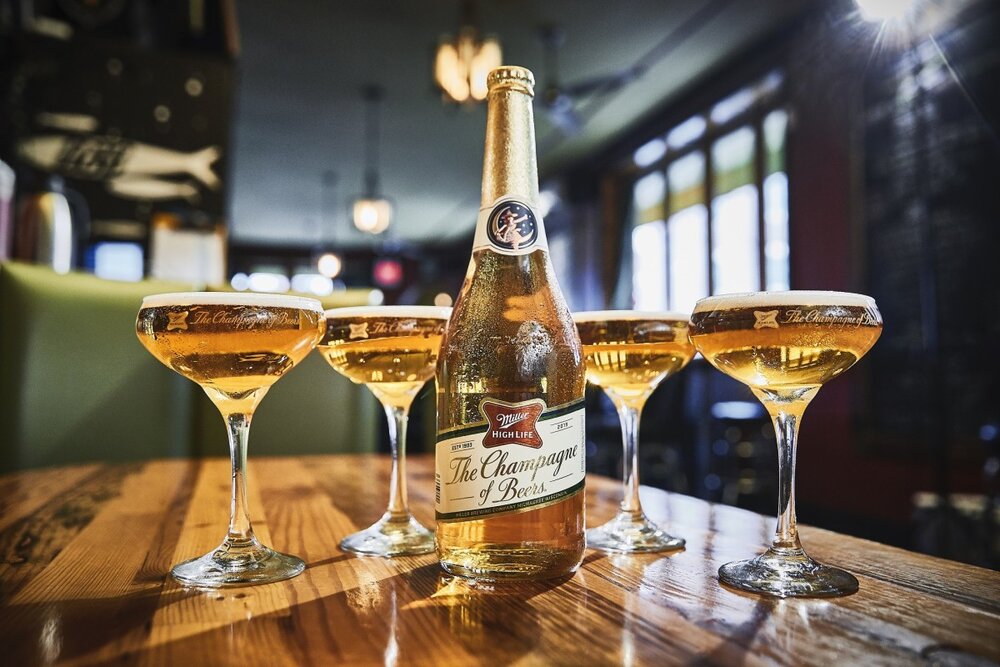
More recently, companies outside the wine world like Apple, Perrier and Yves Saint Laurent have also felt the legal wrath of the CIVC when they tried to use the Champagne name in association with their products. This CIVC’s vigilance has paid off, however, and helped to preserve the history and integrity of the Champagne name.
“So what’s the big deal?” you might ask. “All these decades of strife over a name?”
I’m SO glad you asked!
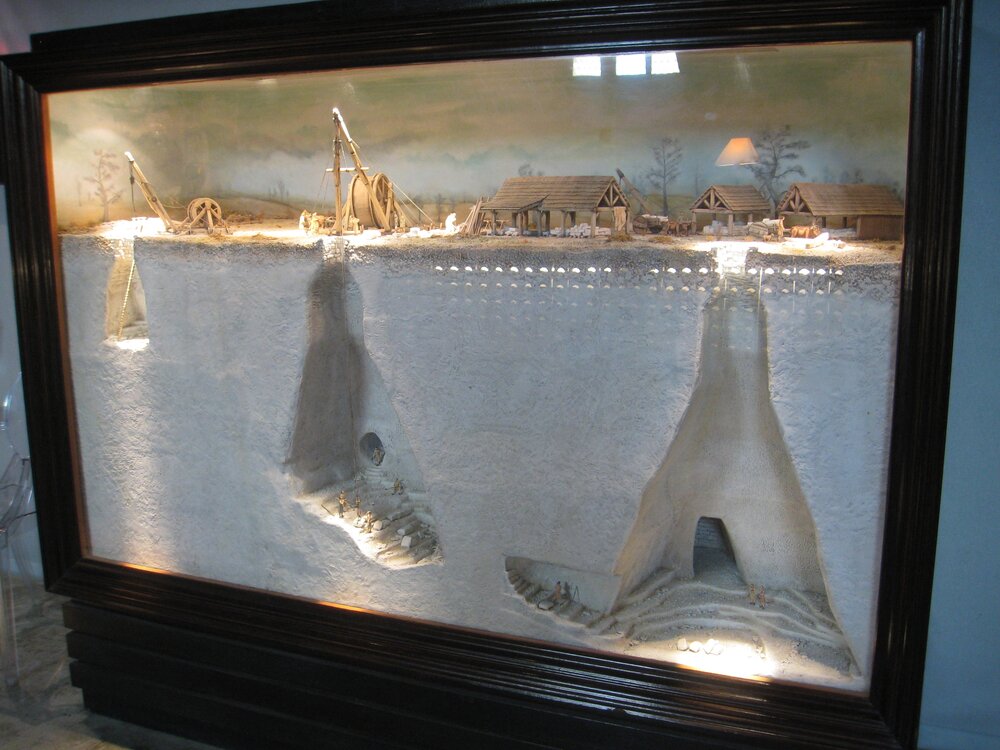
Ruinart’s depiction of how Champagne’s legendary chalk caves were dug.
You see, Old World wine regions like Champagne are ALL about the concept of terroir, a French term that describes the way a wine reflects the place it comes from. Perhaps more accurately, terroir refers to the intersection of grape variety, climate and soil type and how these components come together to produce a wine that can’t be duplicated anywhere else in the world.
Old World wine regions have had centuries to perfect their knowledge of their land and they now definitively know which regions grow which grapes best. That’s why nobody in Burgundy is growing Cabernet Sauvignon and nobody in Champagne is growing Syrah. Because of this, they identify their wines by region rather than by grape variety like we do in the US. The same concept applies to food products like Prosciutto di Parma and Comté cheese which come from specific places in their respective countries.
Alternatively, here in the U.S., we’ve only been making wine for about 200+ years and we’re still experimenting with growing different grapes in different regions. In Napa Valley alone, one of our country’s oldest wine regions, you’ll find vineyards dedicated to numerous grapes including Sauvignon Blanc, Zinfandel, Cabernet Sauvignon and Refosco. So we label our wines by grape variety rather than location which is why deciphering Old World wines can be somewhat of a challenge…but one definitely worth accepting!
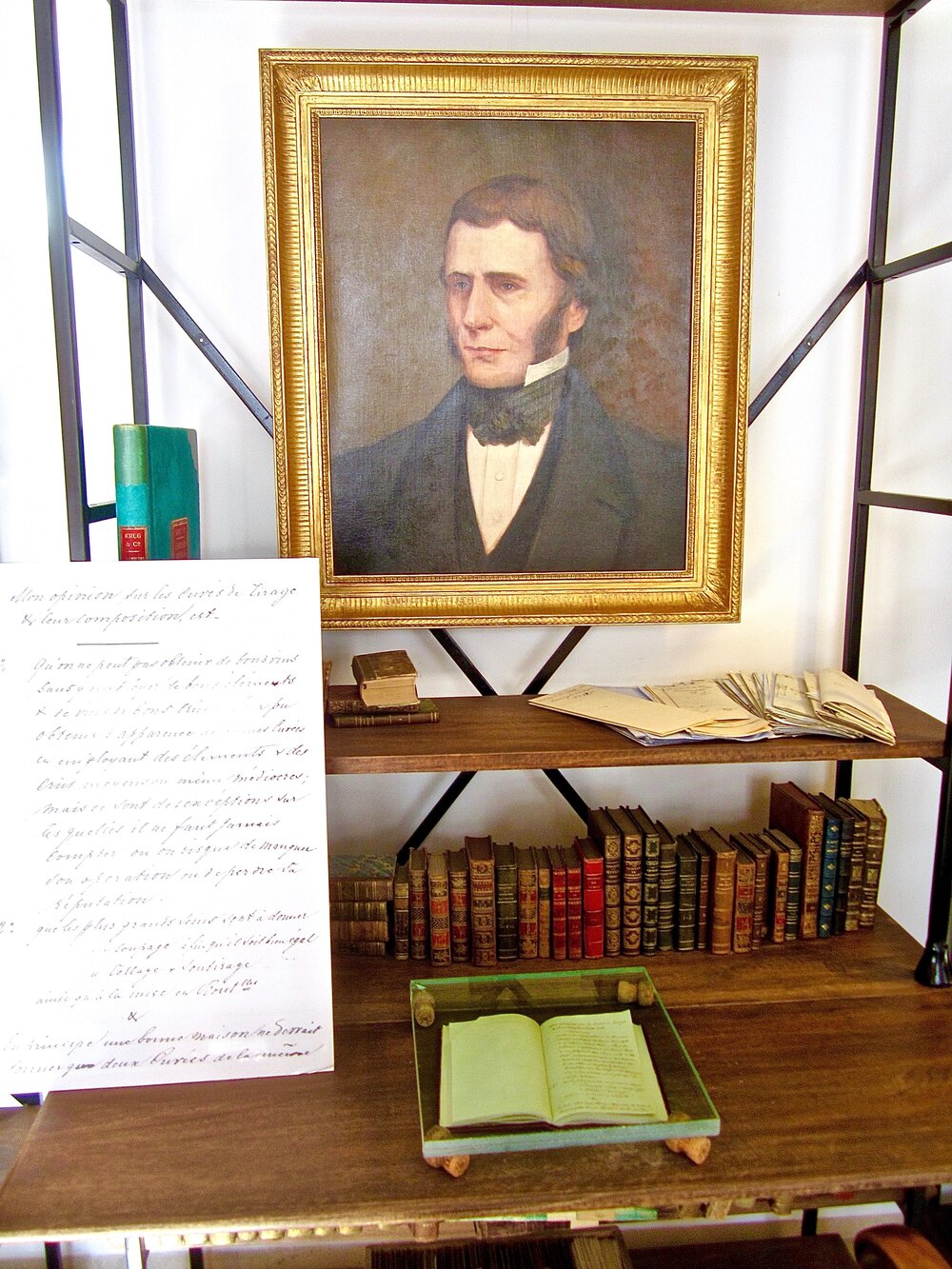
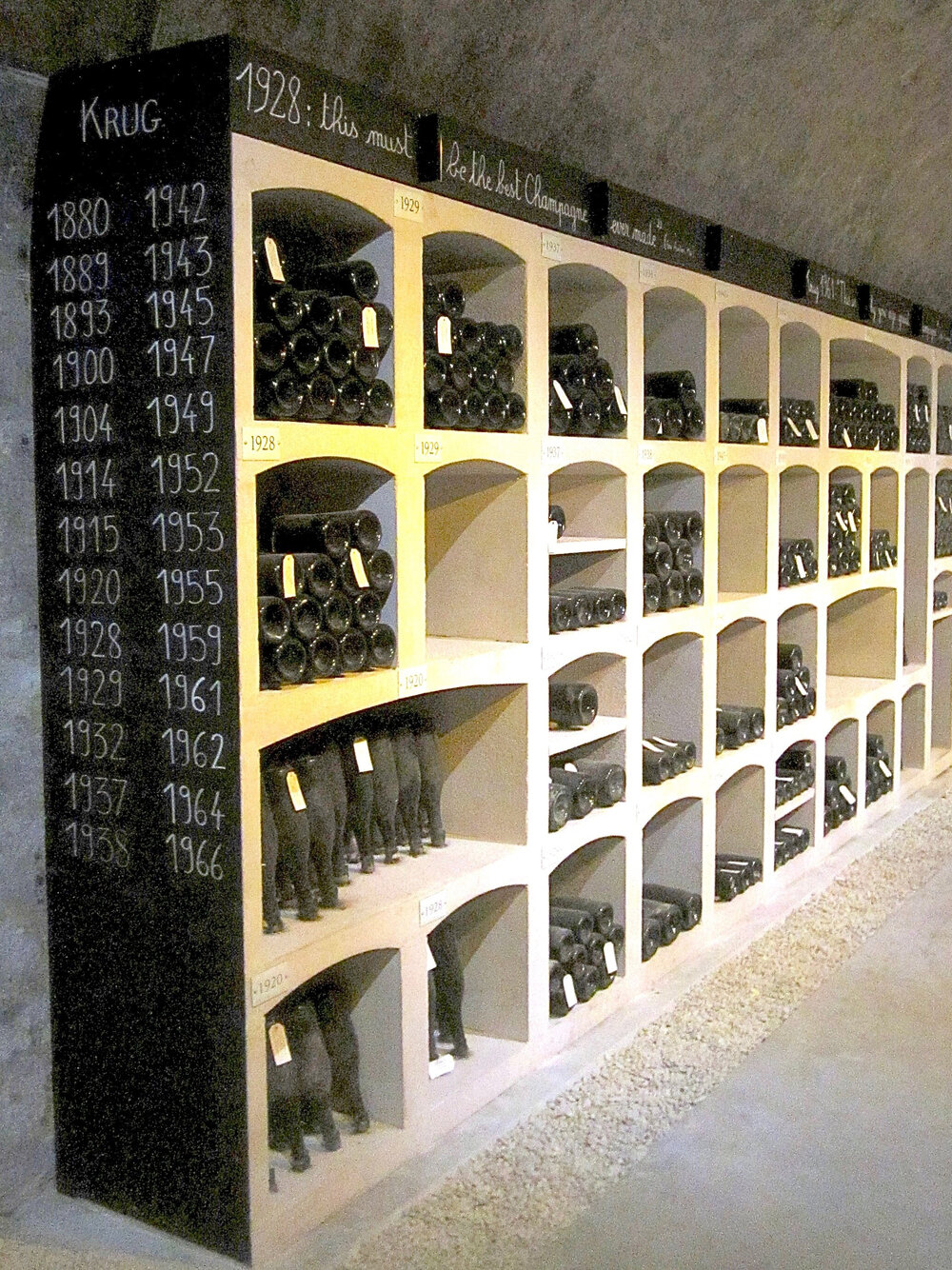
The Champagne production zone (AOC vineyard area) was defined by a law passed in 1927 and encompasses roughly 34,300 hectares of vineyards. It lies approximately 100 miles northeast of Paris, spreading across 319 villages (‘crus’) in five departments: the Marne (66% of plantings), Aube (23%), Aisne (10%) and Haute-Marne + Seine-et-Marne.
A primary distinguishing feature of the Champagne region is its sheer geographic location, the grapevines are planted at the northernmost limits of their cold tolerance. Average annual temperature in Reims and Epernay (latitudes 49°5 and 49° North) is just 50°F and vines, like all plants, require minimal weather conditions to survive and in the Northern Hemisphere, they rarely thrive beyond latitudes 50° North and 30° South.
The region’s second major distinguishing feature is its dual climate, which is predominantly oceanic but with continental tendencies. Champagne also receives barely 1,650 average annual hours of sunshine compared with 2,069 in Bordeaux and 1,910 in Burgundy. The growth rate is accordingly limited, giving the grapes the freshness and crispness that Champagne requires.
There are also four main growing areas (see map below):
The Montagne de Reims: Its soils are chalk-based, with striations of loam, lignite, clay, sand, silt, and marl. It contains nine Grands Cru villages and Pinot Noir is the main grape cultivated here.
The Vallée de la Marne: This sub-region is located on the riverbanks of the Marne and its soils are more variable than in other Champagne sub-region. It contains only two Grands Cru villages: Ay and Tours-sur-Marne and Pinot Meunier is the main grape variety planted here.
The Côte des Blancs: This sub-region owes its name to the color of the grape that is planted there: 95% Chardonnay. Champagnes produced in this area often include the term "blanc de blancs" and it is the source of Chardonnay for many vintage Champagnes and prestige cuvées from the large Champagne houses. Only four villages are located on the actual Côtes des Blancs slope, namely Avize, Cramant, Le Mesnil-sur-Oger and Oger which are known for producing wines with light, delicate aromas and finesse and elegance.
The Côte des Bar: This is the only major sub-region in the Aube, located southeast of the town of Troyes. Pinot Noir is the predominant grape grown here although small amounts of Chardonnay and, to a lesser extent, Pinot Meunier can be found here as well. Other approved grape varieties that are seldom used can also be found here including Pinot Blanc, Arbane and Petit Meslier.
Together these regions encompass nearly 280,000 plots of vines, each measuring roughly 12 acres (100 square metres). Seventeen villages have a traditional entitlement to Grand Cru ranking and 42 to Premier Cru ranking.
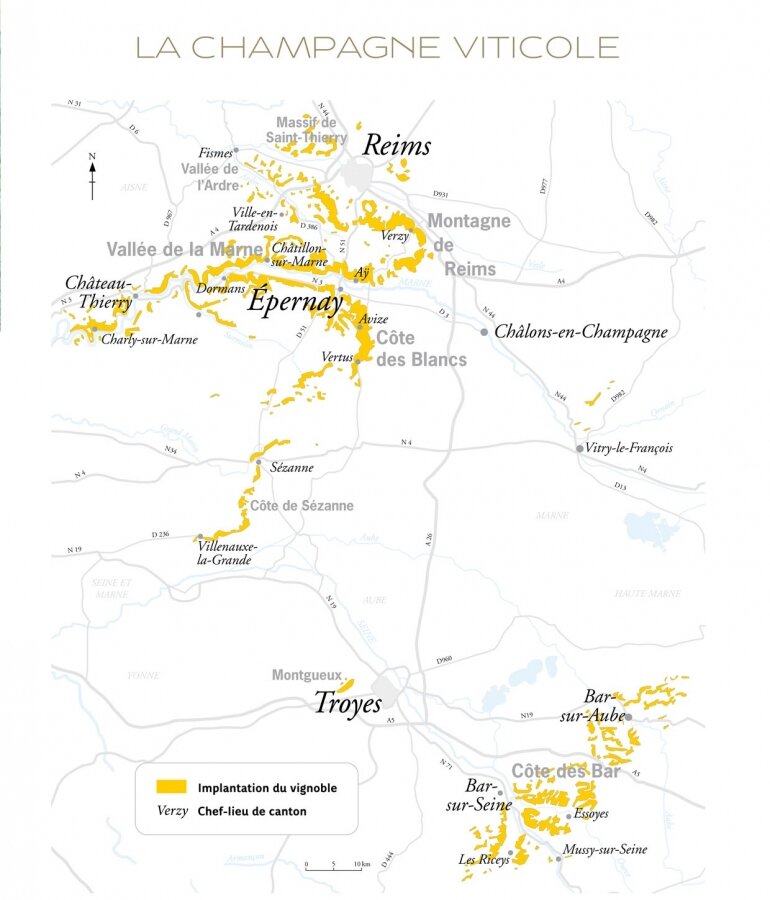
Unlike the vintage dated wines we’re used to seeing on store shelves that represent the majority of wines produced, Champagne is first and foremost about the art of blending.
With few exceptions, most Champagnes on the market are a blend of grapes, vintages and vineyards. With respect to the most common type of Champage produced, non-vintage Brut, these components are brought together by the winemaker with the express intention of creating consistency from year to year. They do this using the three main approved grapes in Champagne that each bring a little something different to the wine:
CHARDONNAY: The only white grape of the Champagne trinity, Chardonnay contributes elegance and acidity to the finished wine, allowing it to age with grace and finesse. Chardonnay accounts for 30% of the region’s plantings and does particularly well in the Côte des Blancs where is yields delicately fragrant wines with characteristic notes of flowers, citrus and minerals. It is the slowest to mature of the three Champagne varietals and also the longest-lived.
PINOT NOIR: Accounting for 38% of plantings, Pinot Noir grows particularly well in the cool, chalky soils of the Montagne de Reims and the Côte des Bar. Pinot Noir adds backbone, body and heft to the blend, producing wines with distinctive aromas of red berries and good structure that can also age particularly well.
PINOT MEUNIER: The least well-known of the three grapes, Pinot Meunier accounts for 32% of plantings in the region and shows better cold-weather resistance than Pinot Noir, which is notoriously difficult to grow. Meunier is well suited to the soils of the Marne Valley and adds roundness to the blend, producing supple, fruity wines that tend to age more quickly than wines made with the other two varieties. Therefore it is most useful in non-vintage Champagnes intended for near-term drinking.
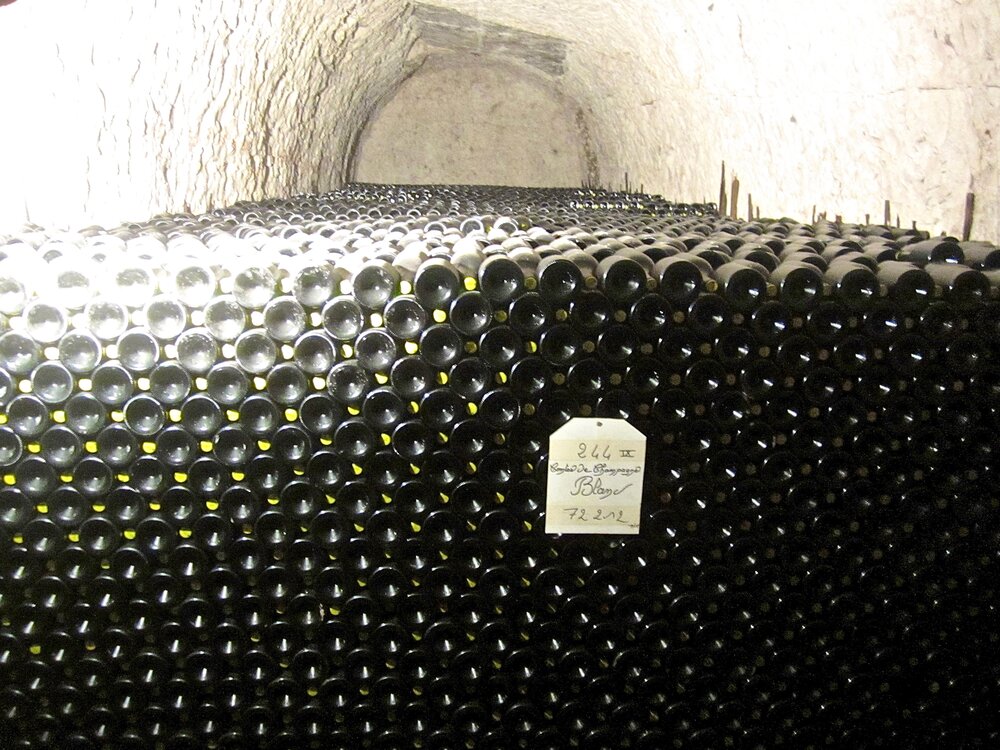
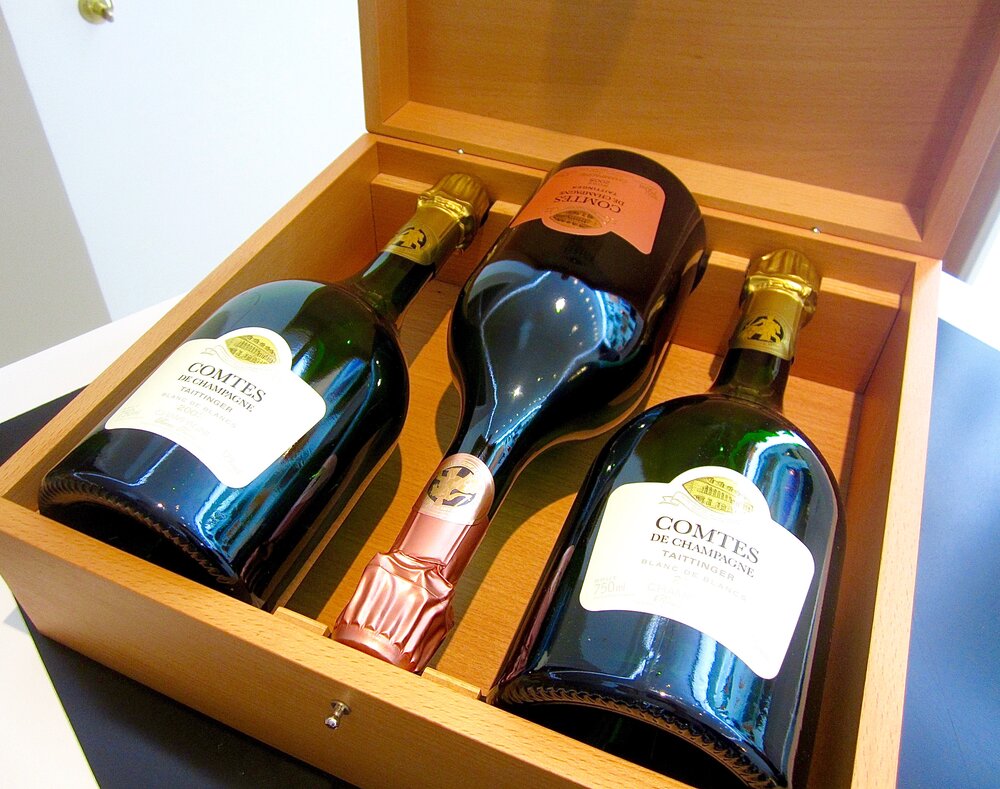
All Sparkling Wine undergoes a secondary fermentation to get its bubbles, and it’s WHERE Champagne undergoes its secondary fermentation that makes it so uniquely special!
By law (Old World wine regions have lots of laws regarding winemaking!), Champagne must undergo its secondary fermentation in the bottle it is later sold in. This is the main tenet of the Méthode Traditionelle (aka Traditional Method and Méthode Champenoise) which is the only method that can be used to produce Champagne. This is a much more time- and labor-intensive method of making sparkling wine compared to the Charmat Method that’s used to make Prosecco in which the secondary fermentation takes place in a tank.
Once primary fermentation has occurred and the base wines have been blended and bottled, a combination of still Champagne, beet sugar and yeast (aka “liqueur de tirage”) is added to each individual bottle to kick start the magical, bubble-inducing secondary fermentation. During this critical transformative process, the yeast consumes the sugar, thereby creating alcohol and carbon dioxide in the bottle. As the yeast cells complete their job, they eventually die and fall to the bottom of the bottle where they are referred to as “the lees.”
The lees impart a very desirable, biscuity, yeasty note that is a sensory hallmark of Champagne and other wines produced using the Méthode Traditionelle. The longer the wine remains in contact with the lees or dead yeast cells, the more pronounced this quality will be. By law, all Champagne must spend at least 15 months in the bottle before release, of which 12 months maturation on lees is required for non-vintage cuvées and three years minimum for vintage cuvées.
In practice however, most of the well-known Champagne houses cellar their wines for much longer, usually 2-3 years for non-vintage wines and 4-10 years for vintage Champagne. It’s important to note these wines spend this time maturing in the legendary chalk caves that lie deep beneath the city of Reims (see video below to see the cellars at Krug Champagne).
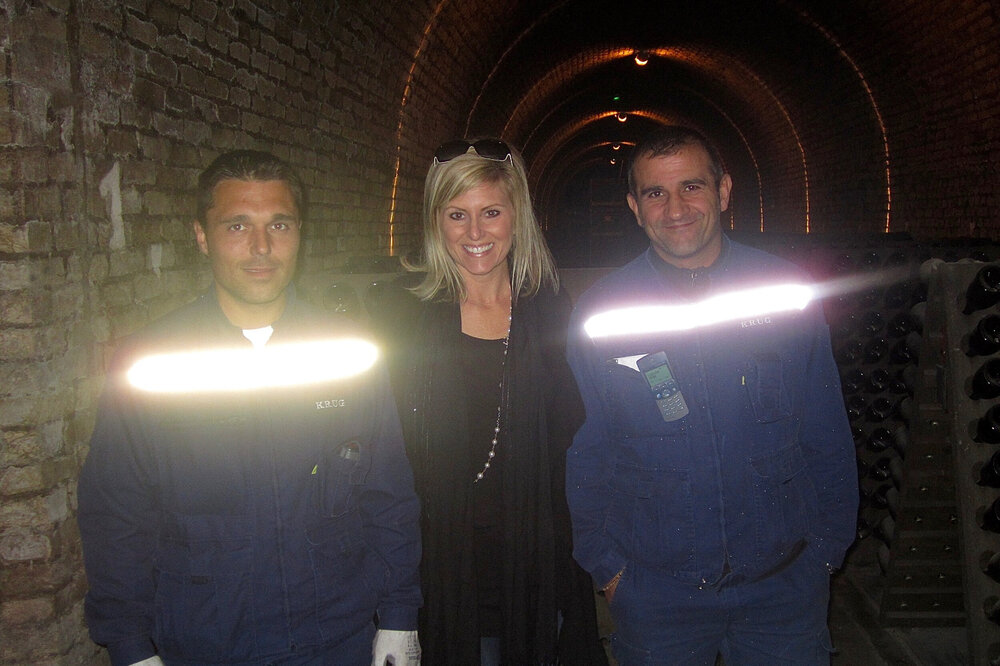
Towards the end of their long resting period, the Champagne bottles must be moved and rotated in order to collect and remove the sediment which is comprised largely of the aforementioned lees or dead yeast cells. This is accomplished through the process of riddling (aka “reumage”) in which the bottles are placed in A-shaped riddling racks, also known as "pupitres."
Initially, the bottles are placed in the racks horizontally, parallel to the floor and gradually, over time, they rotated and inverted either manually or mechanically by gyropalette. This motion causes the sediment to collect in the neck of the bottle where it is ultimately disgorged. Prestige cuvées are usually “riddled” manually which takes about 2-3 months while less expensive sparklers are done mechanically which takes approximately one week.
Once the bottles are completely inverted or “sur pointe” they are ready for disgorgement (aka dégorgement). During this time and labor-intensive process the neck of the bottle containing the sediment is plunged into a freezing solution, the temporary crown cap is then removed and the pressure inside the bottle causes the freezing plug to shoot out (watch video here), while spilling as little actual wine as possible.
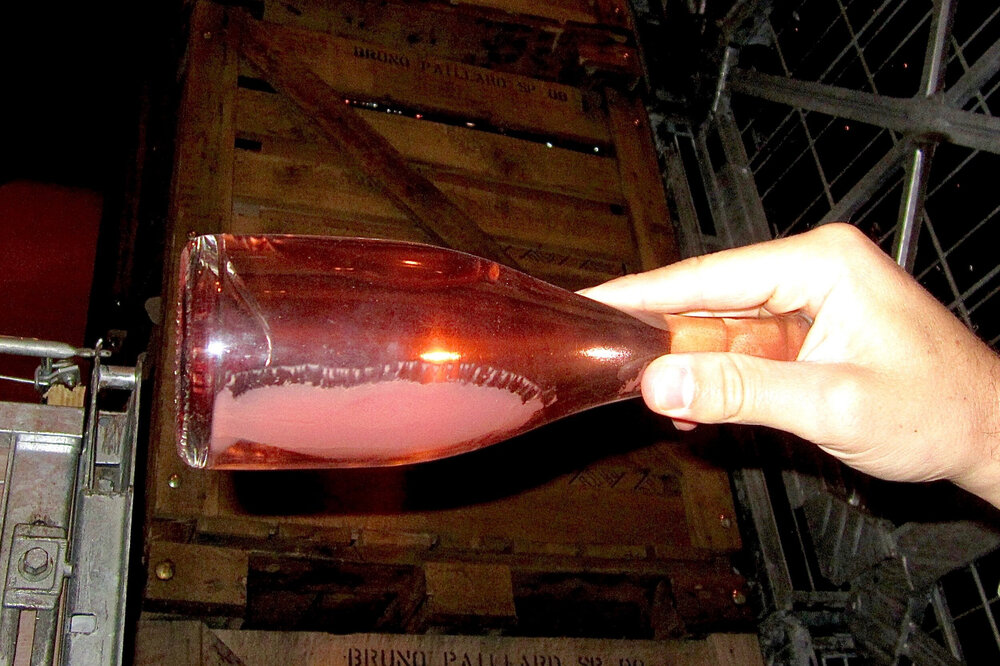

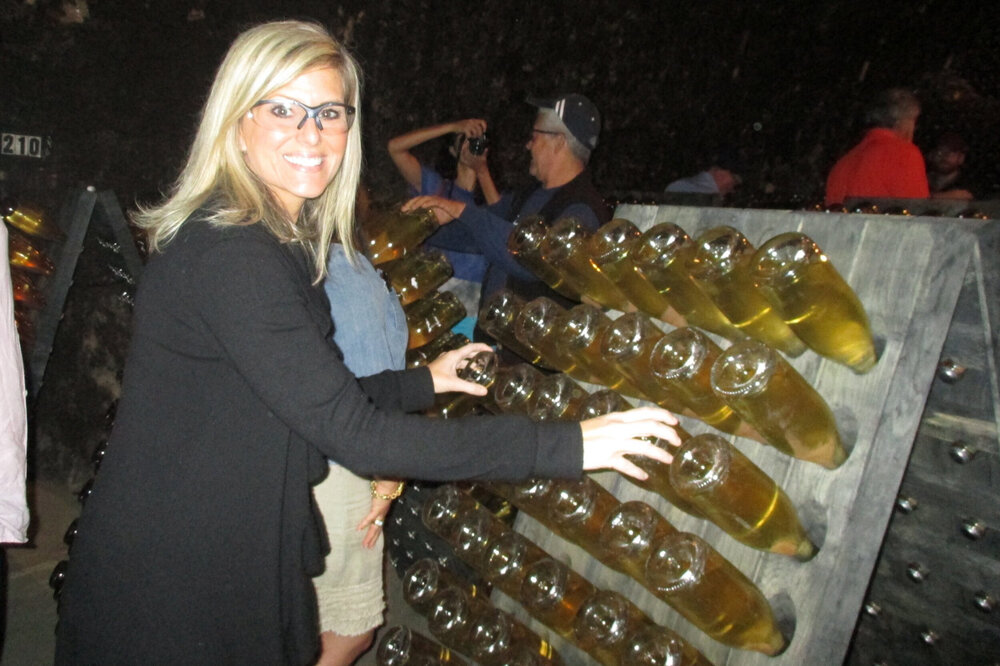
Before the bottle is sealed with a cork, there’s one more very important step: dosage. In order to replace any wine lost during disgorgement, the bottle is topped off with liqueur d’expédition, a mixture of wine and sugar that determines the sweetness level of the finished wine as well. The seven levels of sweetness are determined by the grams per liter of sugar (g/l) added during dosage (see graphic) and by law, that sweetness level must be included on the bottle’s label.
“Brut” is the most common classification you’ll encounter on store shelves followed by “Demi-Sec” and, more recently, “Brut Nature” which has become more popular in recent years due to its low level of sugar. It’s important to note, however, that sugar is added to Champagne mostly in order to balance its high acidity level. For instance, while Brut Champagne can contain up to 12 grams of sugar, it is intended to be perceived on your palate as dry. Due to the Champagne region’s cool climate, the grapes struggle to attain ripeness resulting in wines characterized by high acidity levels and the addition of sugar helps to create a more balanced and enjoyable sensory experience. It’s really not until you get to the Sec/Demi-Sec levels that the wines start to have a noticeable sweetness.
The Méthode Traditionelle concludes with sealing the bottle with a cork. The cork is squeezed into the bottle, covered with a protective foil capsule and then secured with a wire cage (aka muselet) to create an airtight seal. Champagne bottles are thicker than normal wine bottles because they must be able to accommodate the build up of pressure caused by the secondary fermentation. When you’re down in the chalk caves, every so often you’ll hear a “pop” when one of the sleeping bottles breaks due to a flaw in the glass.
Once corked, the bottles continue to age in the cellar until the winemaker deems them ready for release onto the consumer market. The natural, porous cork allows for micro-oxygenation to occur, and for that reason Vintage and Tête de cuvée Champagnes are excellent candidates for aging.
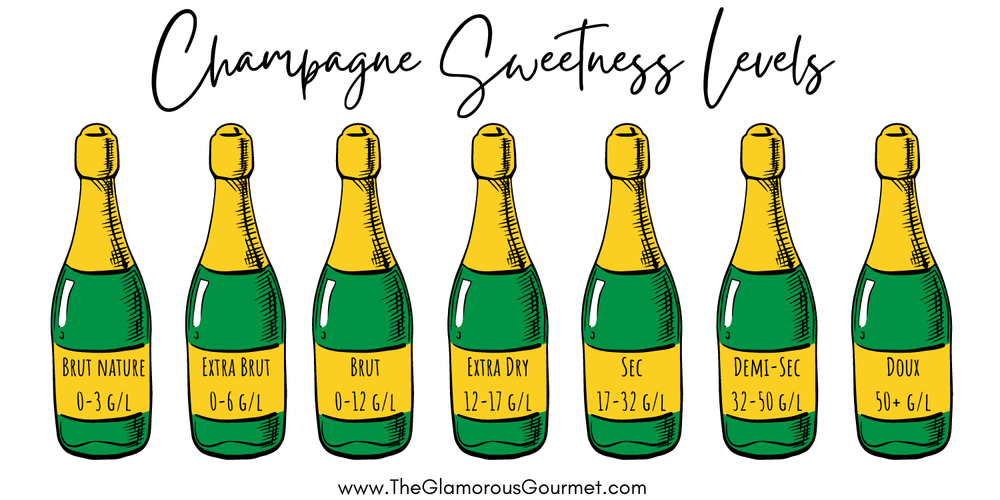
NON-VINTAGE BRUT: The most common type of Champagne, non-vintage Brut is a blend of vintages, grape varieties, vineyards and consists of 85% of Champagne made. It is comprised primarily of the current vintage’s wine with between 15-40% base wine from previous vintages added to create a similar tasting wine from year to year. While we mostly think of wines as a reflection of the vintage they’re from, non-vintage Brut is the exception to this rule. Consistency is the winemaker’s goal because this wine represents the “house style” and it is unique to each brand of Champagne.
For instance, Taittinger is known for its extensive Chardonnay holdings so its non-vintage “Brut la Francaise” is predominantly made of up Chardonnay with smaller percentages of Pinot Noir and Pinot Meunier. On the other hand, Bollinger favors the Pinot Noir grape so their “Special Cuvée” is comprised predominantly of Pinot Noir with small amounts of Chardonnay and Pinot Meunier as well.
VINTAGE: Conversely, Vintage Champagne is blended from the wines of a single ‘millésime’: a single outstanding year that the individual producer chooses to declare a vintage. These wines are only created in those years that are deemed outstanding by a particular house and thus, are meant to reflect all the nuance of the given year. Unlike non-vintage wines, only grapes harvested in the year featured on the label may be included in vintage-dated wines.
PRESTIGE OR TETE DE CUVÉE: At the opposite end of the spectrum from a Champagne house’s non-vintage Brut is their most special offering aka their Prestige Cuvée or Tête de Cuvée. This Champagne is usually comprised of the best of the best of everything that house has to offer and they are proprietary and unique to each house. And they can vary is styles and types too! Some are vintage some are non-vintage. Some are Blanc de Blancs and some are Rosé. It just depends on what the Champagne house wants to do.
Examples of well-known Prestige Cuvées include Louis Roederer’s Cristal, Moët & Chandon's Dom Pérignon, Taittinger’s Comtes de Champagne, Perrier Jouët's La Belle Époque and Veuve Clicquot’s La Grand Dame.
BLANC DE BLANCS: This French term translates to “white from whites” and refers to Champagnes made exclusively from Chardonnay grapes. These wines are generally lighter-bodied with a racy acidity that truly highlight the immense potential of the Chardonnay grape.
BLANC DE NOIRS: This French term translates to “white from blacks” and refers to a white wine (Champagne) made exclusively from black grapes which in Champagne are Pinot Noir and Pinot Meunier. As long as you separate the juice from the skins, you can make a white wine from black grapes as is the case in the Champagne region. These wines are fuller-bodied with a richer mouthfeel, reflecting the characteristics of the grapes it’s made from.
ROSÉ: This name of this style refers to the beautiful pink color of the Champagne that gets its color one of two ways: (1) saignée or (2) blending in still red wine. The saignée method requires the wine to get its color by macerating the juice with the actual grape skins for a period of time. This method produces a Champagne that more closely resembles a red wine with more tannins which are extracted from the colored skins. While forbidden in making still rosé wine, blending still red wine into Champagne to create a Rosé gets a thumbs up from the CIVC! This method also gives the winemaker more control over the process but both methods produce truly delicious, bone dry (NOT sweet!) Rosé Champagne.
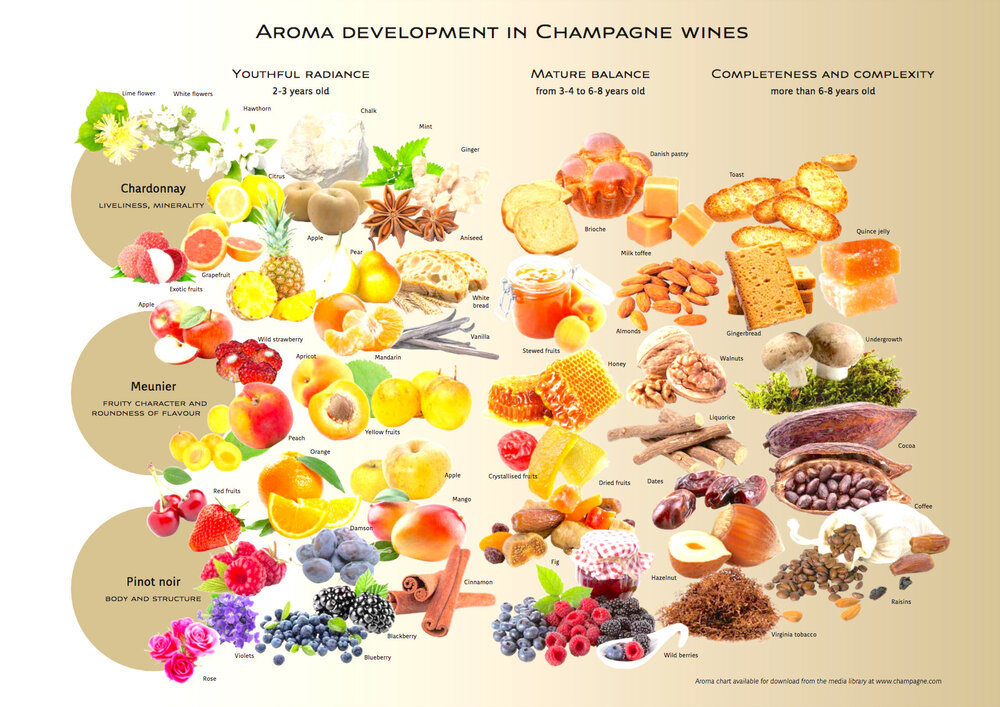
Which glassware you use when serving and enjoying Champagne will depend on the type and style of wine you’re serving as well as the occasion.
If you're popping a non-vintage Brut Champagne to celebrate a festive occasion or enjoy with brunch, by all means break out the flutes! Tulip-shaped, crystal flutes are ideal (avoid those thick, rolled-rim glasses at all costs!) because they allow the aromas of the Champagne to focus in the headspace of the glass where they can be readily enjoyed while still feeling celebratory, glamorous and fun.
But, if you're enjoying a pricier bottle like a Vintage or Prestige Cuvée Champagne, especially if it’s been aged, I highly recommend breaking out your White Burgundy or white wine glasses. The larger bowl and shape of these glasses is perfect for appreciating the complex aromas and flavors of these wines that have developed over time.
You also want to serve special or aged Champagnes slightly warmer than the recommended 45 degrees for most sparkling wines. As these graceful, elegant wines warm up (i.e. 50 degrees), their aromas and flavors are more readily able to be savored and enjoyed.
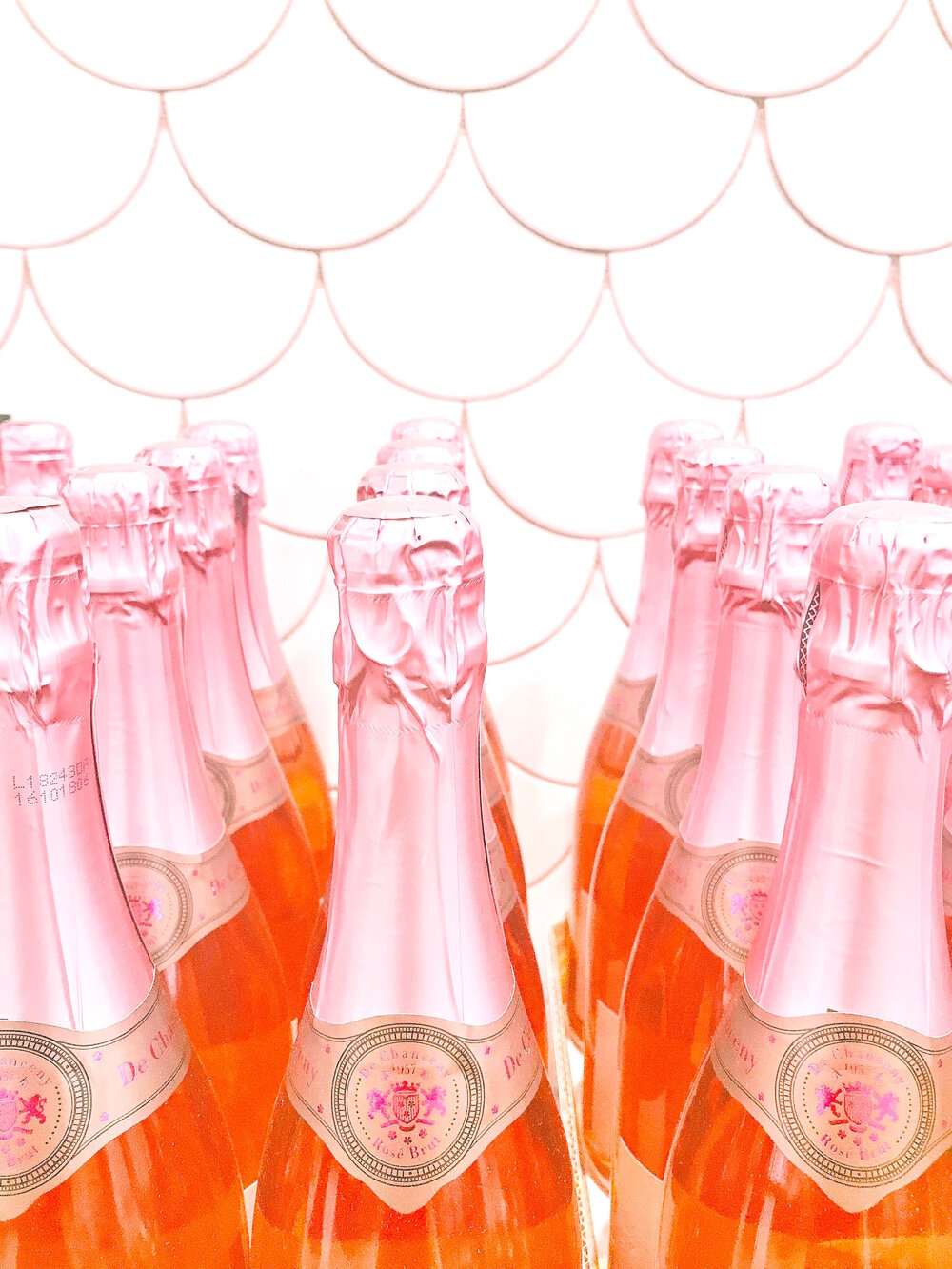
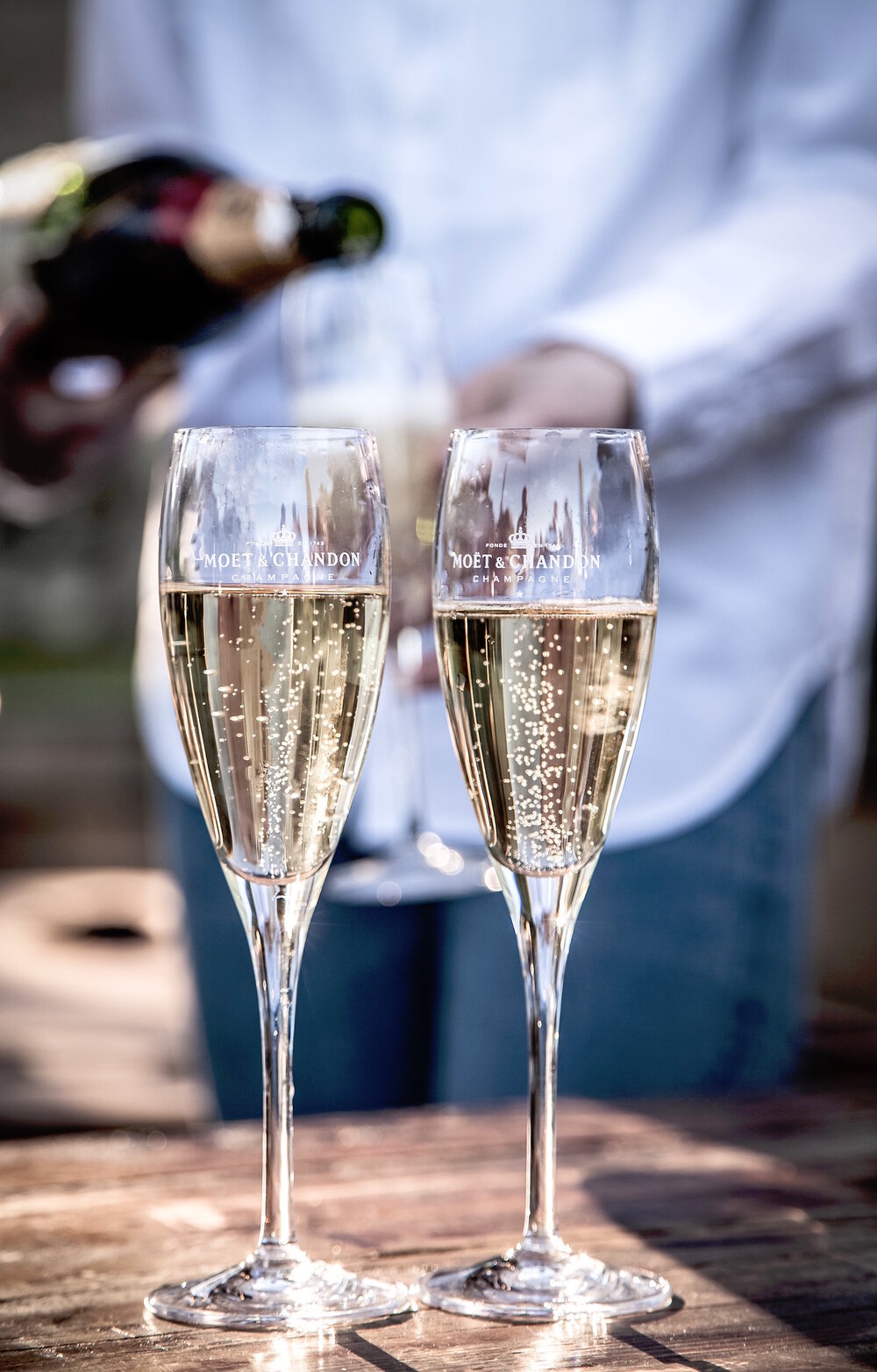
I hope you my Champagne Wine 101 helpful and that it inspired your understanding of this truly delightful wine. If you have any additional questions about anything you’ve read, please let me know in the comments section below. And when you’ve sufficiently soaked up all of this information, please proceed to the next two 101 installments: White Wine 101 and Red Wine 101.
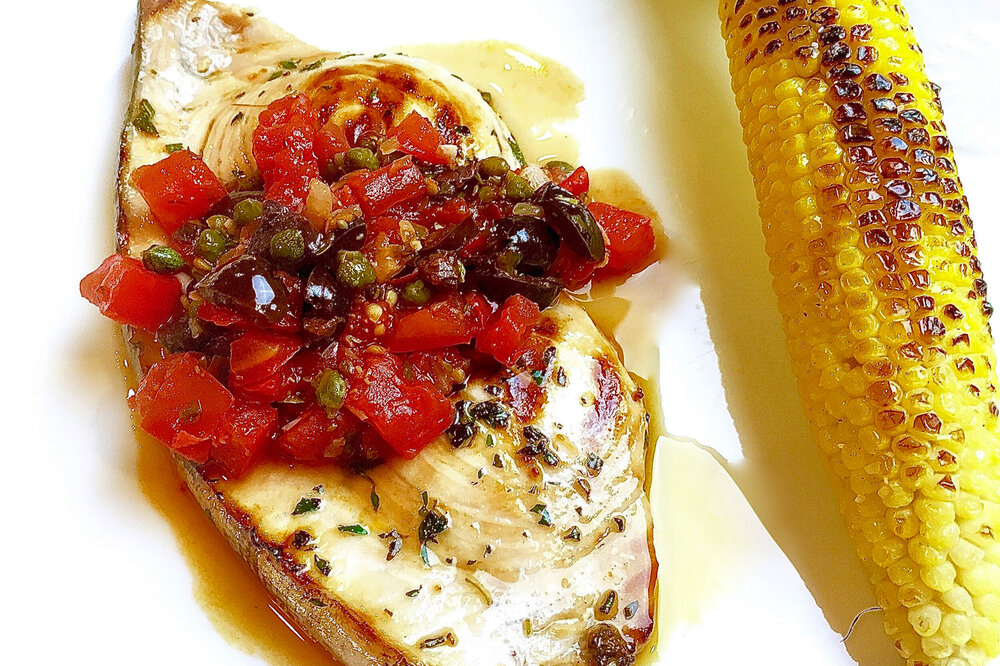
When the good Lord begins to doubt the world, he remembers that he created Provence.
One of my favorite food and wine pairings during the Summer months is a Tuna Niçoise Salad paired with a dry, Provençal rosé - it is sheer Summer deliciousness! But why limit the wonderful Niçoise flavors to just ONE dish? That just doesn’t seem fair. So when a friend kindly offered us some fresh swordfish steaks, these delicious flavors immediately sprang to mind as we happily accepted his oh so generous offer.
Niçoise (pronounced nee-SWAZ) essentially means "in the style of Nice," the fabulous French city located in the luxurious Côte d'Azur. Dishes labeled as such typically include a combination of traditional, local ingredients such as black olives, capers, garlic, tomatoes and anchovies. This recipe for Swordfish Niçoise includes a delicious mixture of black olives, tomatoes, capers, garlic, shallots and a little Herbes de Provence which beautifully complements the flavor and texture of the succulent fish.
Herbes de Provence is a delightful mixture of dried herbs typically found in the Provence region including savory, marjoram, rosemary, thyme, oregano and lavender. It is usually sold in a traditional clay pot and greatly enhances the flavor of dishes ranging from grilled fish to savory stews.
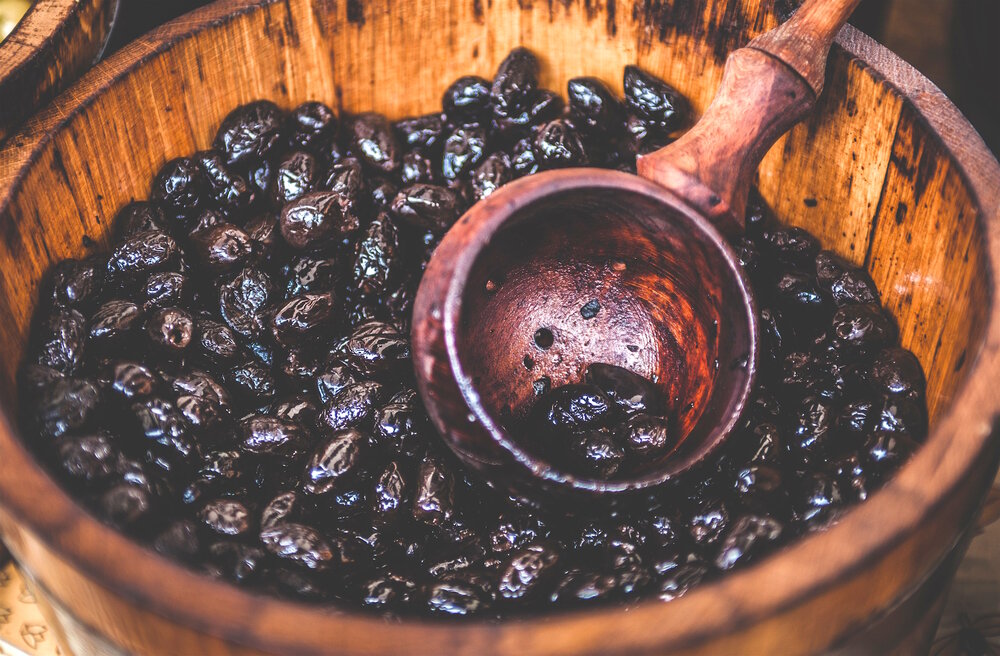
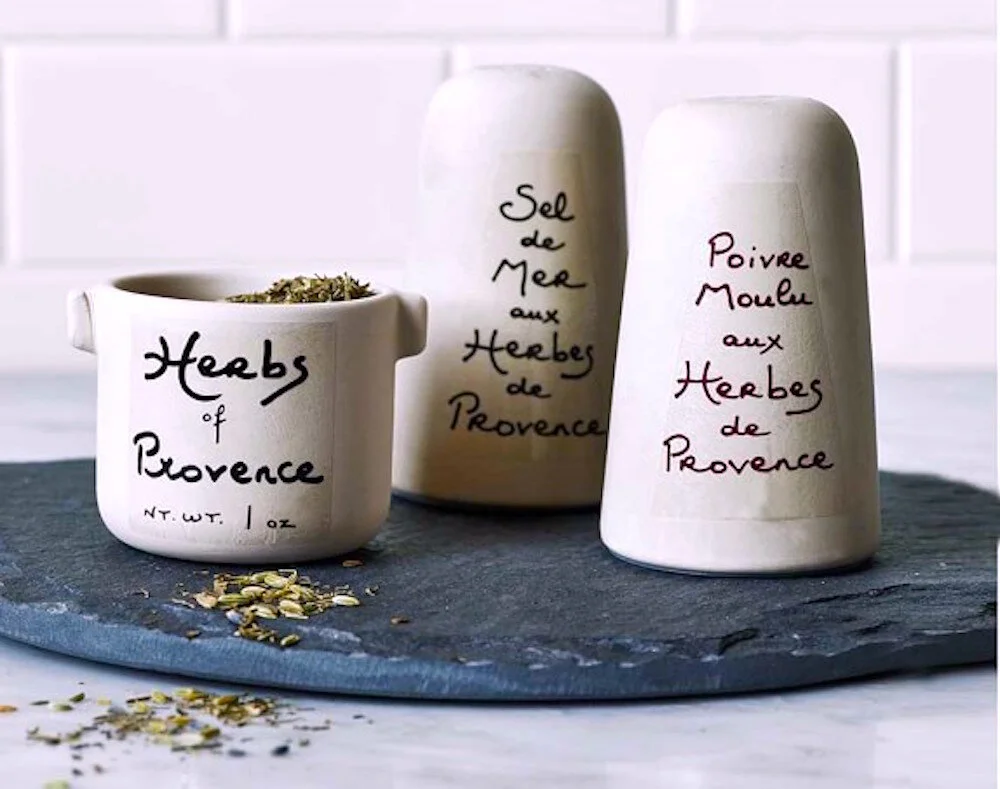
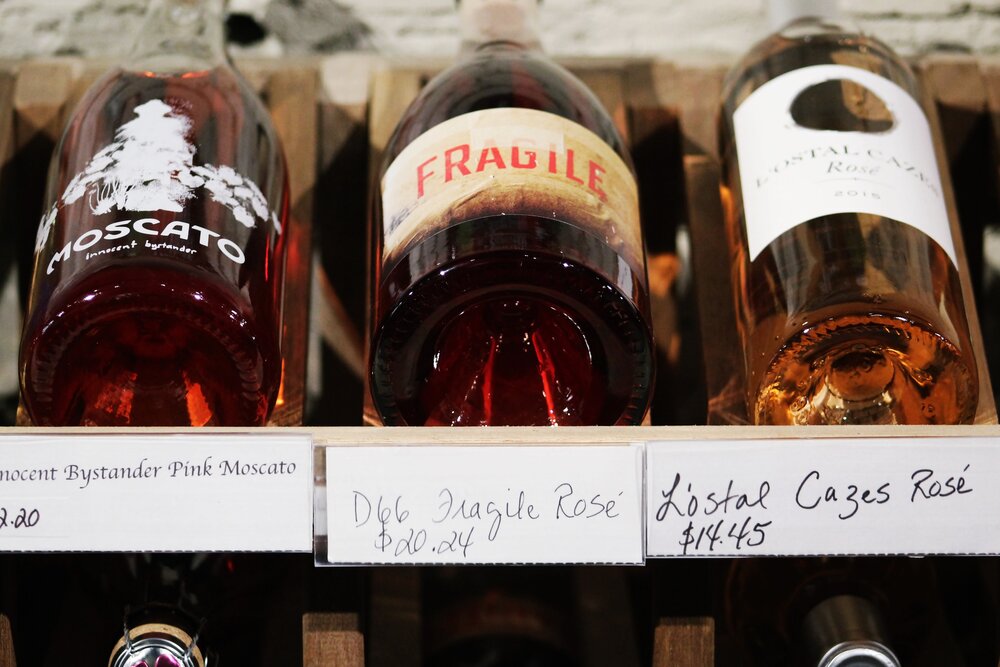
We served the Swordfish Niçoise with my husband's favorite Summer staple - corn on the cob! We cooked the sweet, yellow corn on the grill, allowing for a little "char" for added flavor and then slathered it with butter and a healthy dusting of Kosher salt and freshly ground black pepper before greedily consuming. Talk about simple but oh so very perfect!
To wash everything down and round out our Perfect Pairing, I stuck with one of my favorite pairing principles, if it grows together, it goes together! A refreshing glass of dry, Provencal rosé accentuates the dish’s flavors beautifully. On this particular evening we enjoyed the Miraval Rosé, the well-known Provençal winechild of Brad and Angelina, but any tasty dry rosé will do. Our favorite Provençal producers include Chateau Minuty and Chateau D’Esclans.
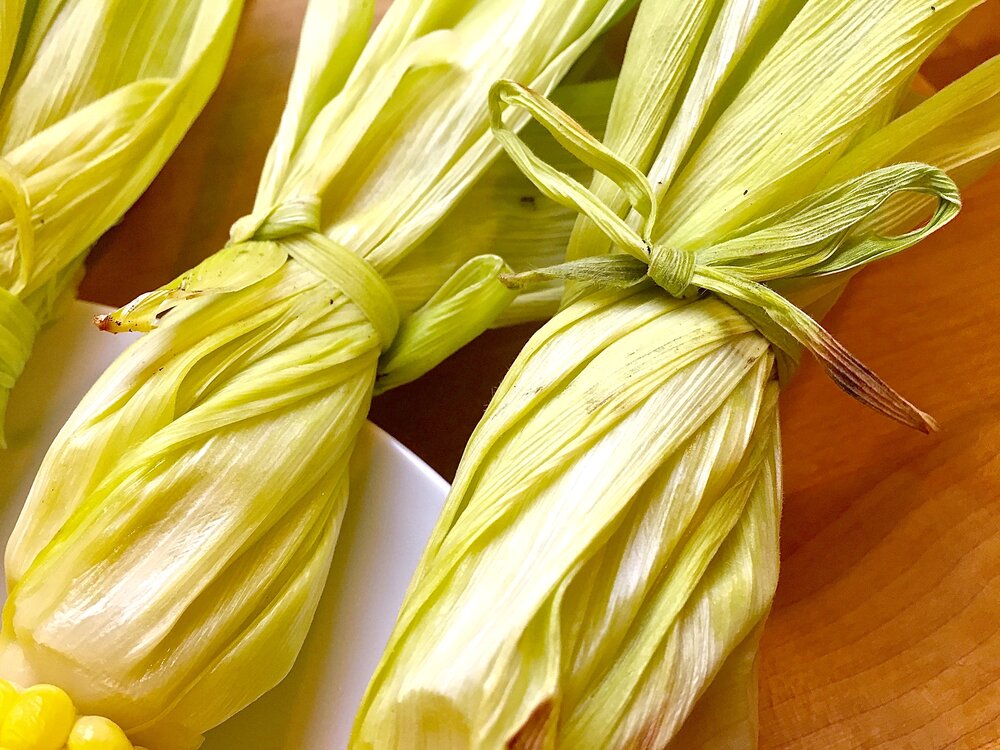
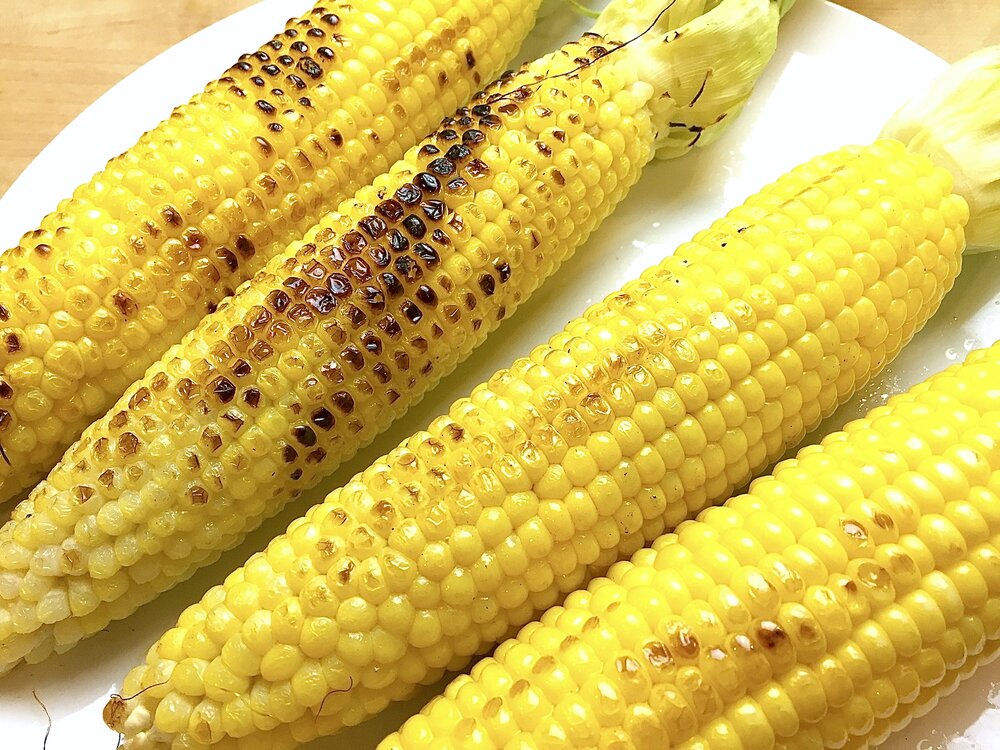
Before Summer draws to a close, I hope you have the chance to enjoy our Perfect Pairing of Swordfish Niçoise and a Provençal Rosé. In fact, why not invite a few friends over for an al fresco dinner and have everyone bring a bottle of their favorite rosé wine? What a great way to share your favorite and possibly discover a new one! What's your favorite Summer food and wine pairing? I'd love to hear about it in the comments section below!
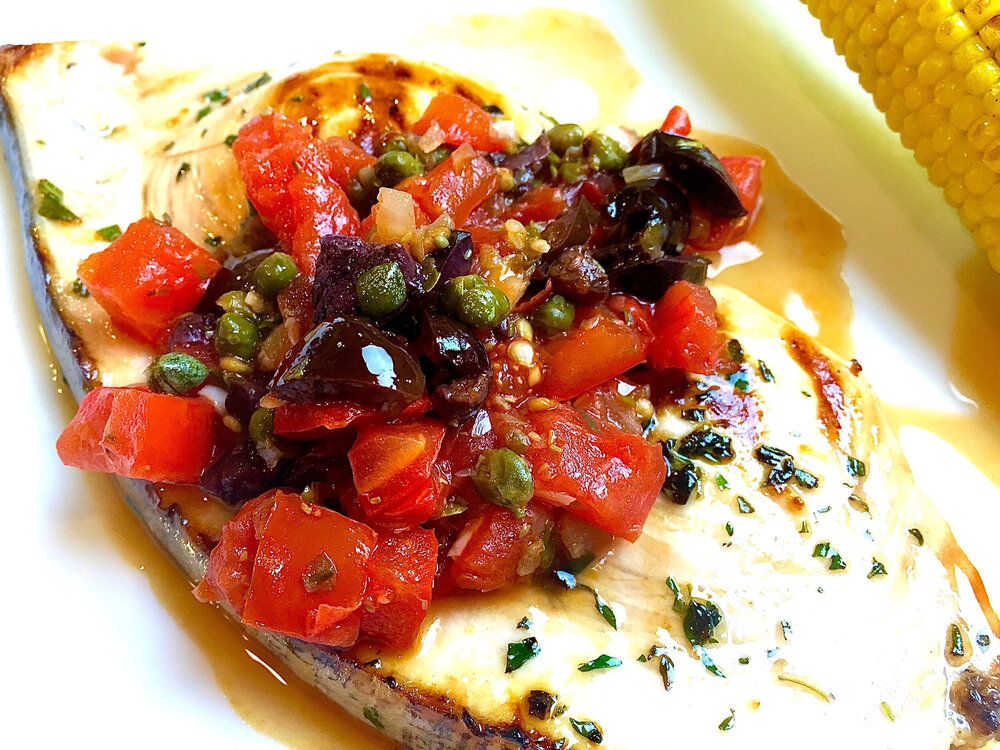
"PERFECT PAIRINGS: SWORDFISH NIÇOISE + A PROVENCAL ROSÉ"
Stephanie Miskew | The Glamorous Gourmet
Serves: 2
Ingredients
2 Swordfish steaks
4 Tablespoons olive oil
1 teaspoon Herbes de Provence
1 teaspoon fresh thyme, chopped
1 teaspoon fresh rosemary, chopped
2 shallots, chopped
2 cloves of garlic, chopped
1/2 cup pitted oil-cured, black or Niçoise olives, roughly chopped
2 Tablespoons capers, drained and roughly chopped
3 ripe red tomatoes, chopped
1/2 cup dry rosé wine
Kosher salt & freshly ground black pepper
Instructions
) Combine 2 Tablespoons olive oil, thyme and rosemary in a glass baking dish. Place the swordfish steaks in the mixture and turn to coat on both sides. Marinate the steaks in the olive oil and herb mixture at room temperature for one hour.
) Heat remaining 2 Tablespoons of olive oil in a frying pan over medium heat. Add shallots and garlic and saute until softened but not browned, 5 minutes. Add tomatoes, olives, capers, Herbes de Provence and wine and stir to combine. Bring to a boil, then cover and reduce heat and simmer for approximately 10-15 minutes. Season sauce to taste with Kosher salt and black pepper.
) Heat grill pan or outdoor grill over medium-high heat. Season swordfish steaks on both sides with Kosher salt and black pepper and grill until medium-rare, approximately 4-5 minutes a side depending on the thickness of the steaks.
) Plate steaks and top with Niçoise sauce. Serve immediately with a glass of chilled Provençal Rosé.
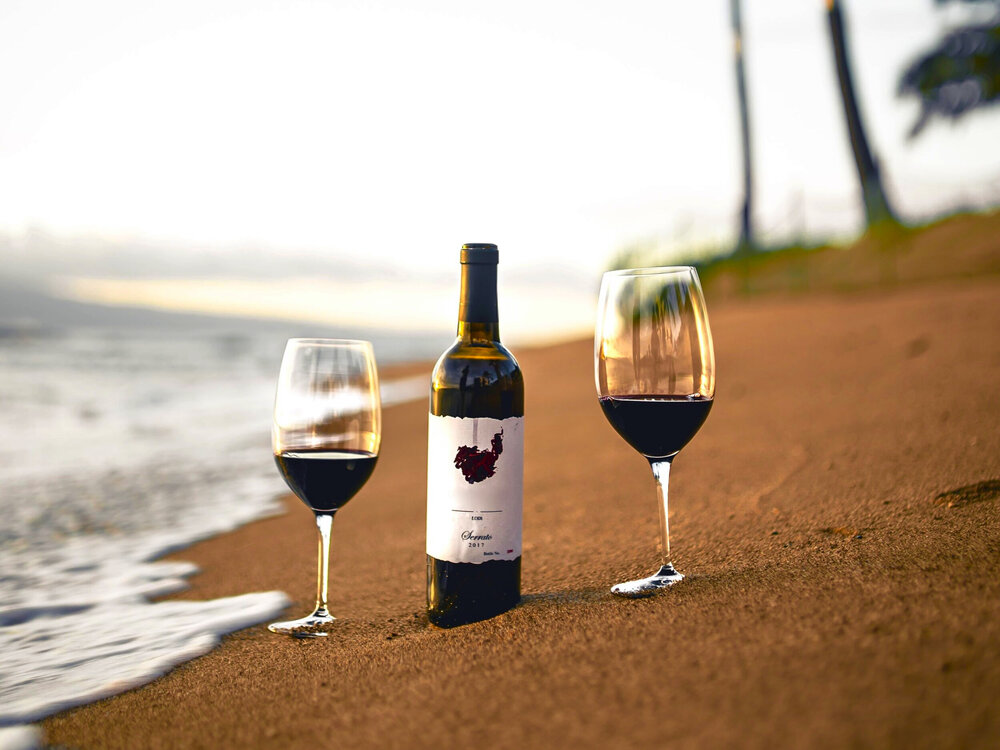
All worries are less with wine.
While rosé has quickly become Summer’s signature wine, with white wine coming in a close second, today I’ve got something for you die hard red wine lovers who would MUCH rather #Cabernetallday - even in 110 degree heat! And thanks to those of you who reached out to me about this topic because there are puh-lenty of positively delightful, seasonally-appropriate red wines from around the globe for you to enjoy this Summer and I’ve included some of my favorites in this post.
You can enjoy these beauties on their own (served with a slight chill, of course!), or paired with your favorite Summer dishes like meatier fish (i.e. swordfish, salmon), burgers and BBQ - the possibilities are truly endless…and oh so delicious!
Before we dive into the selections, here are a few tips to keep in mind when choosing a Summer red wine:
Opt for wines made from thinner-skinned red grape varieties such as Pinot Noir, Gamay and Barbera which produce light- to medium-bodied red wines with minimal tannins that are much more refreshing in the heat of Summer.
Avoid heavily oaked red wines. French oak imparts notes of baking spices such as clove, cinnamon and allspice as well as a richer, more viscous texture which is more of a #Fallthang. Summer reds should exhibit a nice balance between fruit and acidity with only a kiss of tannin!
Keep an eye on that ABV! If you’re spending the day at the beach or lounging by the pool you don’t want to get prematurely #daydrunk because a wine’s alcohol level is off the charts. Stick with reds 14.5% or lower and you’ll be able to enjoy AND remember your Summer day.
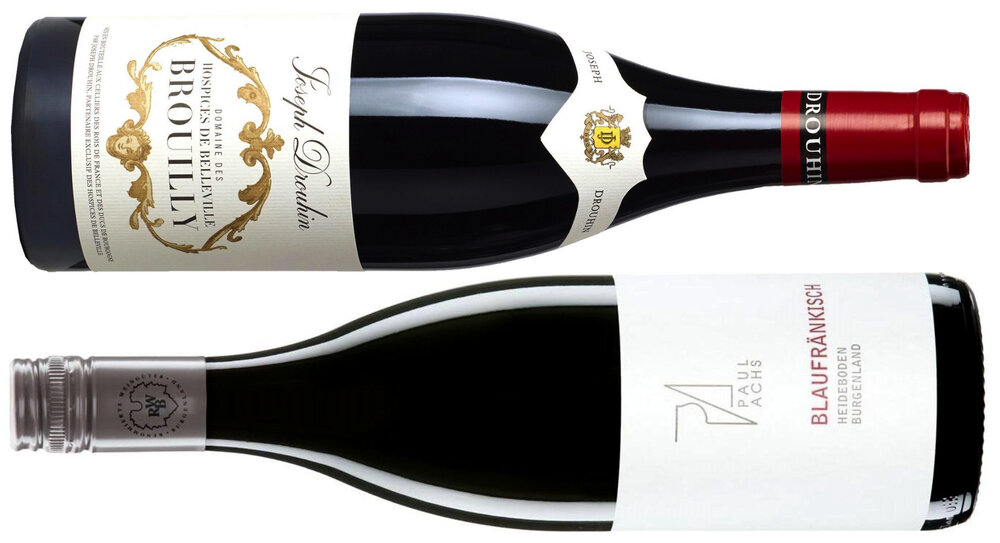
1.) Maison Joseph Drouhin Hospices de Belleville Brouilly, Beaujolais, France ($25): One of the best Summer pandemic #winegoals you can have is to get to know cru Beaujolais - NOT Beaujolais Nouveau - CRU Beaujolais! These wines hail from specific villages or “crus” (there are 10 of them!) within the southernmost part of Burgundy and are crafted entirely from the Gamay grape that produces utterly charming, light- to medium bodied reds that are vibrant, fruity and delicious. This exclusive partnership between Maison Joseph Drouhin and the Hospices de Belleville is worth seeking out with notes of black cherry, wild strawberry, violets and spice - for maximum enjoyment, serve slightly chilled!
2.) Paul Achs Blaufränkisch Heideboden, Burgenland, Austria ($19): Please don’t let the name deter you! The Blaufränkisch grape is one of my Summer faves and it might just become yours too! This indigenous Austrian grape produces medium-bodied red wines known for having oodles of lush, dark fruit (i.e. blackberry, black cherry and plum) accentuated by notes of black pepper, herbs and flowers. And in the hands of esteemed winemaker Paul Achs, you really can’t go wrong! Opt for youthful examples of Blaufränkisch like this one which are guaranteed to charm you with their lively acidity and soft, approachable tannins.
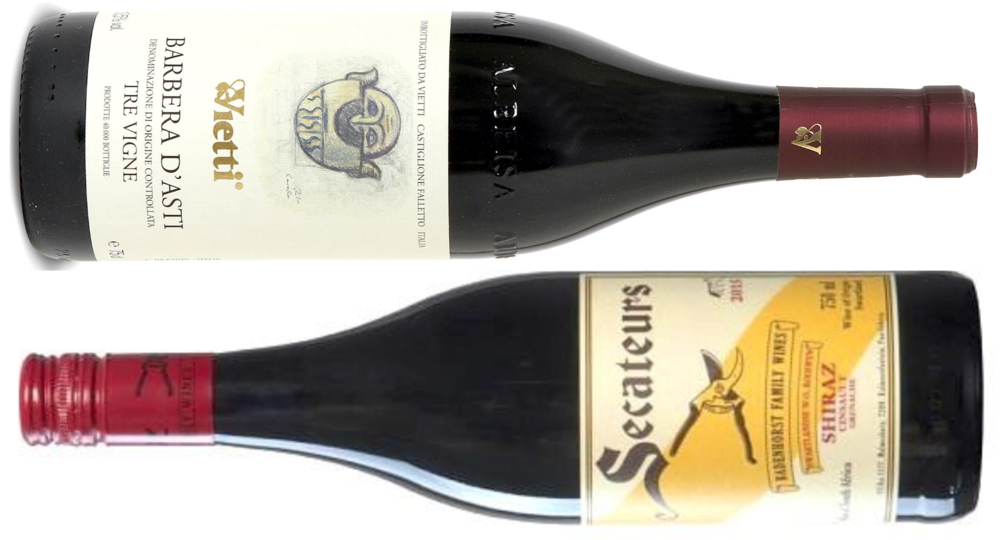
3.) Vietti Barbera d’Asti Tre Vigne, Piedmont, Italy ($18): If you are new to the Barbera grape, this delightful Italian red will immediately win(e) you over! Not to be confused with the Nebbiolo-based Barolo and Barbaresco wines which hail from the same region and require ample aging, Barbera (which is the name of the grape AND the wine) is ready to drink young. These alluring, medium-bodied gems are known for their racy acidity, soft tannins and charming, fruity character. This incarnation from the legendary Vietti family display notes of black currant, black cherry, violet and cassis with a lengthy, spice-tinged finish that’ll have you coming back for more!
4.) A.A. Badenhorst Secateurs Red Blend, Swartland, South Africa ($17): The Secateurs line of wines, named for the tool used to prune back the vines in the Winter and harvest ripe grapes in the Summer, from cousins Adi and Hein Badenhorst is, simply put, sheer Summer perfection! I mentioned the Secateurs Chenin Blanc in my Summer white wine post and the red, a juicy blend of Cinsault (82%), Shiraz (10%) and Grenache (8%), is equally delicious. Fragrant aromas of ripe red fruit and spice are followed on the palate by savory flavors of ripe red cherry, red currant and pomegranate with hints of anise and spice with a supple, smooth mouthfeel.
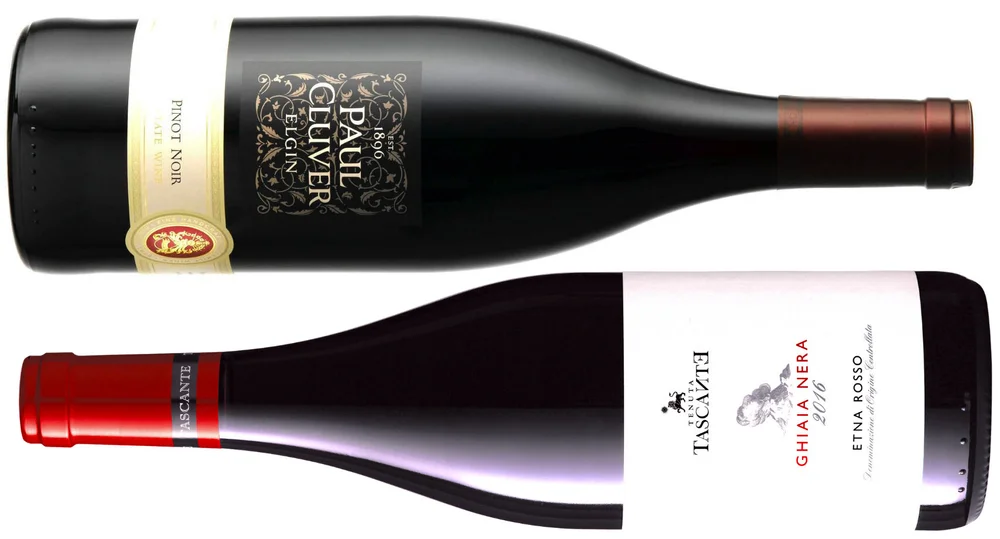
5.) Paul Cluver Estate Pinot Noir, Elgin, South Africa ($24): Pinot Noir has the ethereal lightness that’s so desirable in a Summer red wine but often at a very high price. Enter the wines of Paul Cluver! This 4th generation family has been farming in the Elgin Valley for 120 year and were the first to pioneer it as a fine wine region. The region’s cool climate is perfect for growing the finicky Pinot Noir grape and Cluver focuses exclusively on Burgundian clones. This gem of a wine is 100% Pinot Noir aged in a combination of (25%) new and used French oak barrels and the end result is a delightful, medium-bodied wine with classic notes of red cherry, cranberry, earth and spice.
6.) Tasca d’Almerita Tascante Etna Rosso Ghaia Nera, Sicily, Italy ($20): Sicily seems to be a never-ending source of intriguing grapes like this red beauty: Nerello Mascalese. Producing wines I would describe as Pinot Noir meets Nebbiolo, its wines can be fruity, herbaceous, spicy and floral all at the same time and, perhaps most importantly, imminently enjoyable. The wine’s pale color belies its power, leading you to believe you’re in for a wimpy wine but that couldn’t be farther from the truth! Instead, this wine delights with robust aromas and flavors of black cherry, wild strawberry, spice + volcanic ash accentuated by a tangy acidity and lithe tannins.
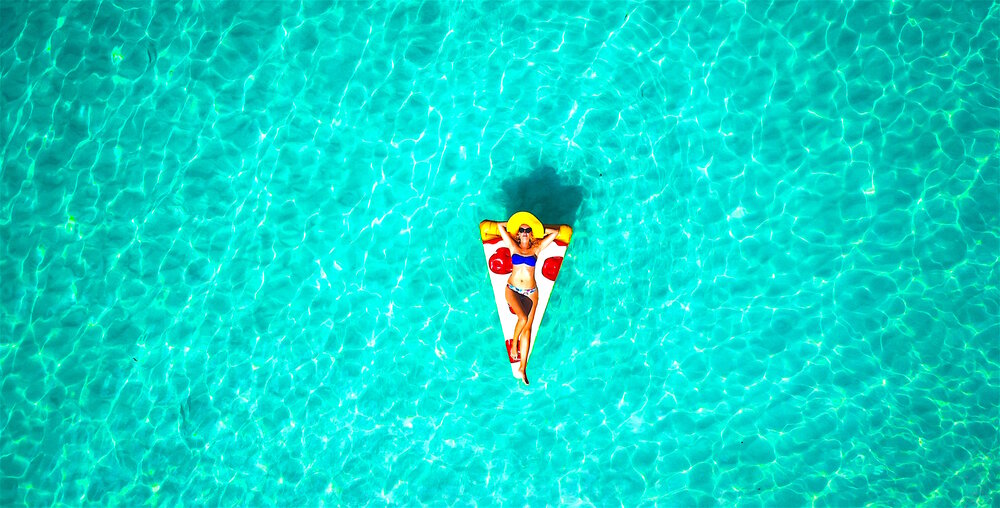
Tropical the island breeze, all of nature wild + free, this is where I long to be, la isla bonita.
The sun is shining warmly on your face as you float, weightlessly in the azure blue pool, toes lazily dipping into the water every so often to cool you off. You’re relaxed and happy as you reach for a chilled glass of something delicious to quench your thirst, but you suddenly realize…for the first time in awhile…you don’t want to #roseallday, you want #whitewineallthetime?
Well…I tried.
But even the most dedicated rosé lovers (myself included) need a break every now and then, and when that happens, there’s nothing like a crisp, lively white wine to cleanse and refresh your palate. So if you’re in need of a change of pace right about now, you’re in the right place! In this post I’ve got some lively, refreshing white wines that are the perfect alternative to drinking pink.
But before we dive in, here are a few tips for selecting white wines for Summer:
Opt for white wines that are stainless steel fermented. This method preserves a wine’s fruity flavors and bright acidity which is ideal for Summer.
Avoid heavily oaked white wines. French oak imparts notes of baking spices such as clove, cinnamon and allspice that are usually associated with Fall. Oak treatment also gives wine a richer, more viscous texture which is also more of a #Fallthang.
Look for light to medium-bodied wines that won’t weigh you down with heavy tannins or get you drunk too quickly with oodles of alcohol.

1.) Loimer Grüner Veltliner, Kamptal, Austria ($18): This dry white wine is made from 100% Grüner Veltliner, the signature white grape of Austria. Fred Loimer produces some of the best examples of Austrian Grüner and is a big proponent of biodynamic farming as well. He harnesses all the charming qualities of this grape that’s known for its hallmark notes of citrus and white pepper. This wine is fermented entirely in stainless steel with glorious notes of green apple, lime, white peach and limestone with a dry, racy acidity. It also has the hint of “spritz,” a slight sign of effervescece often found in quality Grüners that aren’t overly processed.
2.) A.A. Badenhorst Secateurs Chenin Blanc, Swartland, South Africa ($17): This gem hails from South Africa’s Swartland wine region located about 30 miles north of Cape Town. Cousins Hein & Adi Badenhorst have been making their mark on the the wine scene over the past decade, crafting unique wines using traditional methods. Chenin Blanc is a white grape variety which originated in France’s Loire Valley and today, is the most widely planted grape variety in South Africa, where it is also known as “Steen.” This wine is fermented predominantly in stainless steel tanks and left on the lees for 7 months to enhance its richness and body. The result is a delightful wine with aromas of honey, orange blossom and white peach, followed on the palate by juicy flavors of ripe peach, citrus and pear accompanied by a lively, food-friendly acidity.
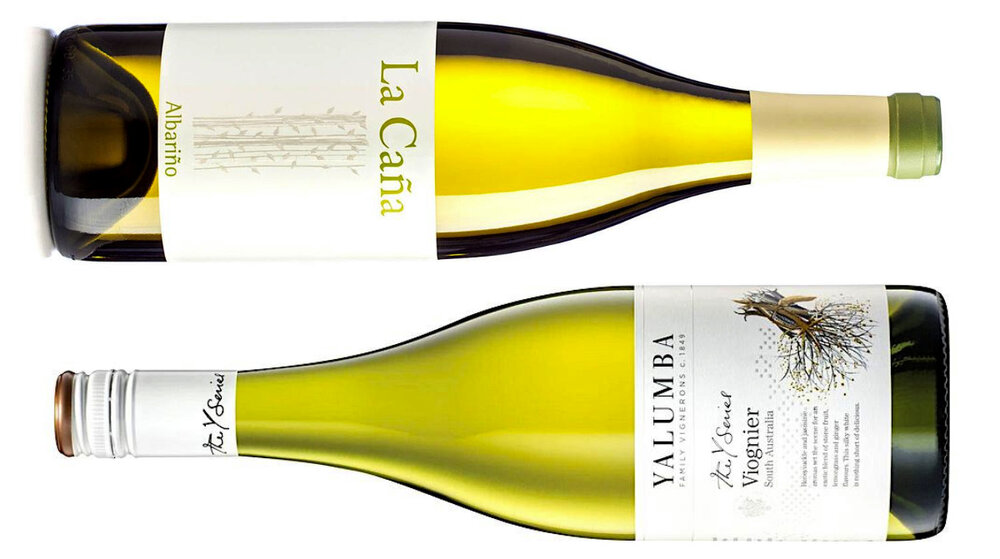
3.) Bodegas La Caña Albariño, Rias Baixas, Spain: After introducing the Albariño grape to the US in 1991 and promoting it for many years, Jorge Ordoñez founded Bodegas La Caña in 2008. Today, this boutique winery is dedicated to preserving and producing native grape varieties from very old vines, which produce fruit of much higher quality and concentration. This wine is 100% Albariño crafted by winemaker Nacho Alvarez. 75% was fermented in stainless steel while the remaining 25% was fermented in large, neutral French oak barrels. It then spent 8 months sur lie with regular battonage to enhance the wine’s texture and mouthfeel. This wine has expressive fruity, floral aromas while on the palate its refreshing minerality and crisp acidity are accompanied by delightful notes of citrus, apricot and honey.
4.) Yalumba “Y Series” Viogner, South Australia, Australia ($12): If you’re craving a white wine with a little more heft, this stunner is definitely the way to go! Viognier is a white grape known for it’s opulent qualities but in certain incarnations (like this one), it expresses all of its unique characteristics without being too rich on the palate. Fermented entirely in stainless steel using native yeasts, the wine was allowed to remain on the lees for three months which added creaminess to the finished product. The final wine delights with fragrant aromas of orange blossom, ginger and honeysuckle while on the palate, notes of fresh pineapple, citrus, peach preserves and spice culminate in a lovely, lingering finish.
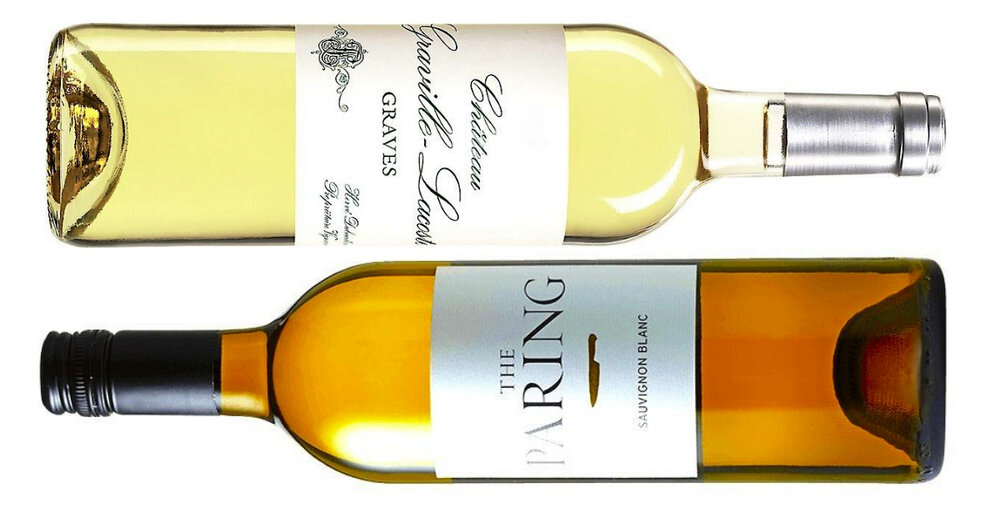
5.) Château Graville-Lacoste Graves Blanc, Bordeaux, France ($22): Think that only uber-expensive, posh, collectible wines come from France’s Bordeaux region? Think again! Bordeaux Blanc is probably one of best kept secrets in the wine world - and one of the best values too! These wines are a blend of three grape varieties: Sauvignon Blanc, Sémillon and Muscadelle and if you’re a fan of lighter white wines like Sauvignon Blanc and/or Pinot Grigio, they are right up your alley. This particular beauty is a blend of 75% Sémillon, 20% Sauvignon Blanc and 5% Muscadelle from 50 year old vines grown on the clay and limestone soils. Winemaker Hervé Dubourdieu fermented this wine entirely in stainless steel and the end result is a pure and expressive wine with sublime notes of lemon verbena, white peach and lime blossom with a hint of fennel. It is crisp and lively and sure to become a Summer favorite!
6.) The Paring Sauvignon Blanc, California ($25): If you prefer a bolder, more fruit forward expression of Sauvignon Blanc, this is definitely the wine for you! The Paring wines are a new offering from the acclaimed Jonata winery, and explore different blending opportunities where experimentations with site and varieties are key. Winemaker Matt Dees aged this wine in a combination of 1/3 new French oak, 1/3 neutral French, 1/3 stainless steel for 10 months to created layers of texture and flavor. This wine is defined by powerful fruit and balanced by mouthwatering freshness; an exotic, decadently textured and electrically framed bottle of 100% Sauvignon Blanc. Classic lemon curd and lime zest aromas. Notes of grilled white peach and agave nectar. Dense and complete on the palate with a beautiful crisp pear-like texture. So satisfying. Finishes fresh with herbal complexity and hints of ripe green melon. Perfect white for the summer months.
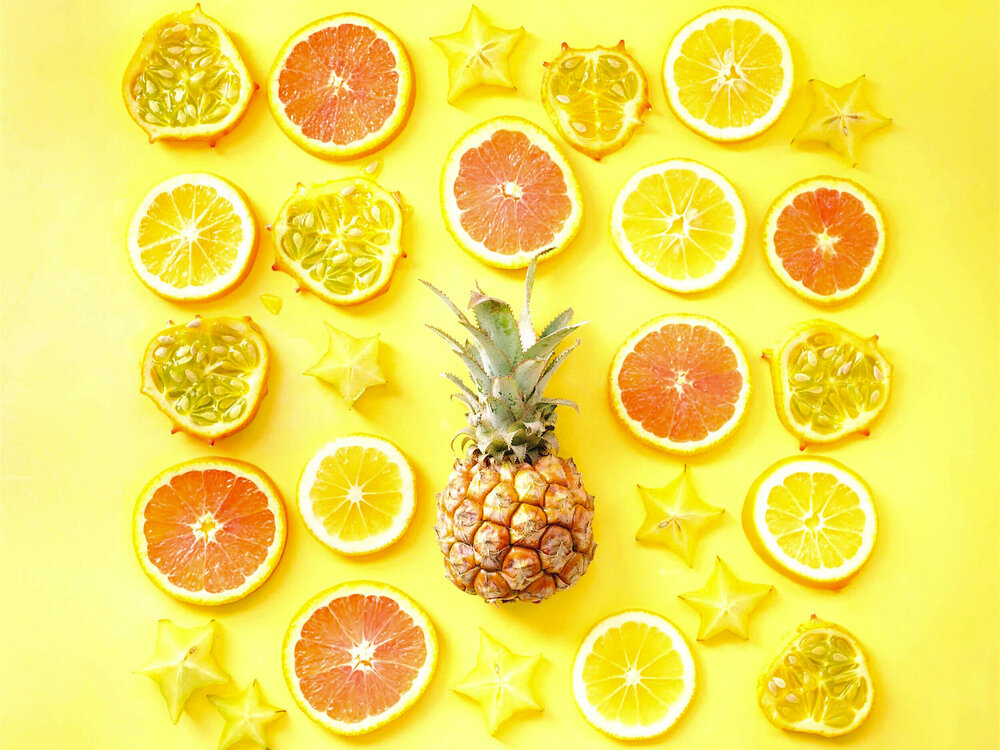
Keep your face to the sunshine + you will never see the shadows.
While this Summer might look much different than you imagined earlier this year, there’s no reason you can’t still embrace the spirit of the season. In this post I’m sharing my Top 10 Summer Finds for Food + Wine Lovers that were chosen especially to enhance your enjoyment of Summer without wandering too far from home.
And for some reason I can’t seem to get enough of this gorgeous citrus yellow color! It literally makes my eyes smile which triggers an immediate flood of endorphins in my brain. And as a big proponent of “feeding your senses,” sight is a very important one and when feeling down or depressed, just focus your peepers on the above photo and see if this color doesn’t do the same for you.
Simply scroll down for the curated list and all the associated details. I hope these items help you celebrate Summer and live your best life in a new but thoroughly enjoyable way. xo
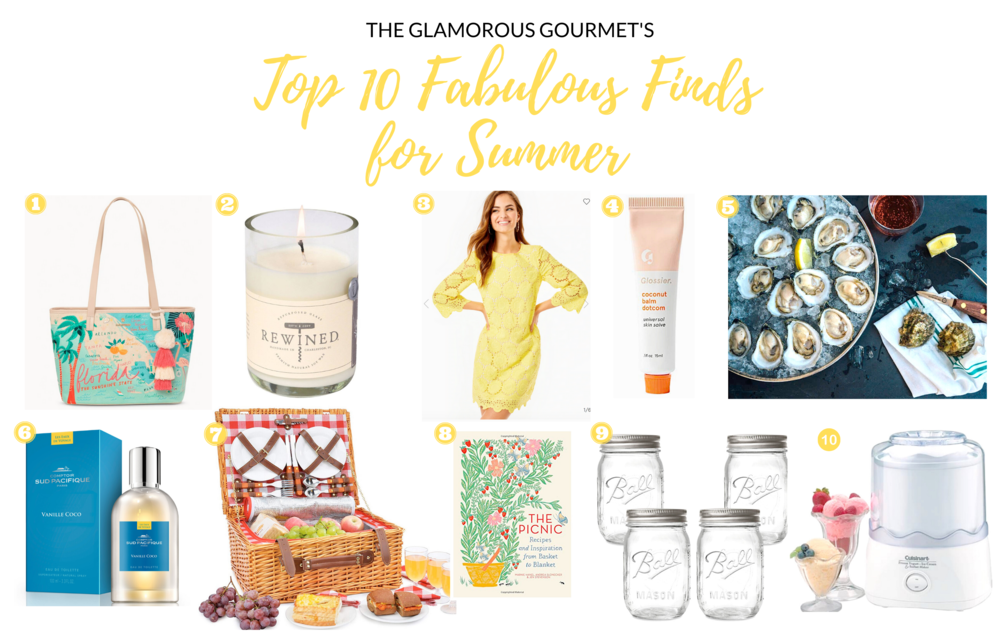
1.) SPARTINA Embroidered Florida Bag ($129): These charming, colorful embroidered bags truly represent the casual elegance of Summer and are available in many coastal states.
2.) REWINED Soy Wax Rosé Scented Candle ($28): This stylish candle is handpoured in Charleston, SC + beautifully captures the soft red berry, rose petal, white peach and pink peppercorn notes of your favorite rosé wine. It has an incredibly long burn time and it’s subtle delicious scent is positively perfect for Summer.
3.) LILLY PULITZER Marielle Scallop Dress in Lilly’s Lemon Floral Scallop Eyelet ($218): This absolutely gorgeous dress is Summer personified! Leave it to Lilly to come up with the most glorious, eye-catching citrus yellow color and combine it with the perfect seasonal eyelet fabric. This is sure to be a favorite for years to come.
4.) GLOSSIER Coconut Balm Dotcom ($26.95): This cult-favorite, do anything lip balm has the most heavenly coconut scent + once you experience it you’ll understand why it so frequently sells out! Formulated with nature’s heavy-duty moisturizers including Castor Oil, Beeswax + Lanolin it nourishes the skin while getting you in the Summer spirit.
5.) ISLAND CREEK OYSTER Starter Pack ($75): If you can’t make it to Cap Cod this Summer but still want the oyster experience, you can’t go wrong with oysters from Duxbury, MA! This started pack includes 2 dozen oysters PLUS shucking tools so simply pop a bottle of bubbly (the PERFECT pairing!) + get shuckin’!
6.) COMPTOIR SUD PACIFIQUE Vanille Coco Eau de Toilette Spray 1 OZ/30 ML ($42): The master perfumers behind Comptoir Sud Pacifique have truly captured the feeling of the tropics. Vanille Coco embodies the gentle warmth + relaxation of a South Pacific beach. The scent blends notes of island vanilla, refreshing coconut milk + intoxicating heliotrope for a blissful escape to a warm + gentle memory of paradise.
7.) CALIFORNIA PICNIC BASKET Set for 4 ($99.95): In lieu of that Summer trip, enjoy green spaces closer to home! Whether you choose the gently rolling hills of a local park or the beautiful white sands of your favorite beach, this picnic basket set is perfect for packing up your favorite al fresco foods (see #8 for some fab ideas!) + a bottle of wine and enjoy the COVID free fresh air!
8.) THE PICNIC: RECIPES + INSPIRATION FROM BASKET TO BLANKET BY MARNIE HANEL ($16): A picnic is a great escape from our day-to-day + a chance to turn a meal into something more festive + memorable. This fabulous book shares everything you need to plan an effortless outdoor get-together including no-fail recipes, helpful checklists + expert advice ~ Enjoy!
9.) BALL MASON JARS Regular Mouth w Lids + Bands (16-ounces) Set of 4 ($14.22): These multi-purpose jars are a Summer essential in our house! In addition to using them for preserving jams and jellies, we use them for everything from serving our favorite Summer cocktails (especially this one), to mixing a batch of salad dressing + creating layered salads + overnight oats - the possibilities are truly endless!
10.) CUISINART ICE-20 Automatic 1 1/2 Quart Ice Cream Maker ($89.97): One of Summer’s great delights ice cream on a hot, sunny day! And with this beauty you’ll always be prepared - it is a true investment that you will gain years of delicious enjoyment from. And if you’re looking for inspiration, try my recipe for Honey Lavender OR Browned Butter + Bacon ice cream.
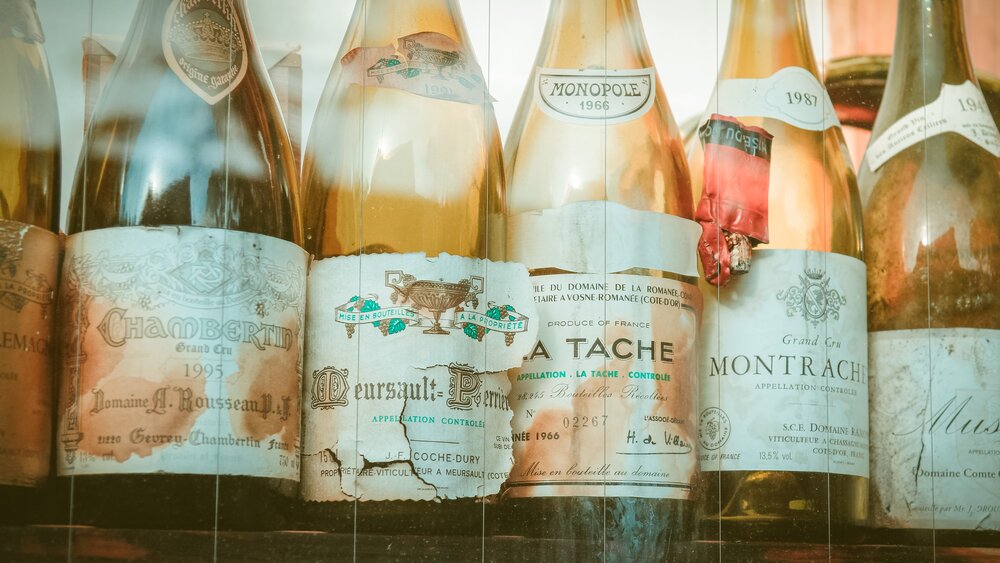
Everybody’s palate is different, but nobody’s palate is wrong.
Wine can be a pretty intimidating subject. The sheer volume of information involved in its mastery is daunting enough but when you add a cadre of wine snobs and aloof Sommeliers to the mix, yep it’s official. I remember when I decided to get serious about wine and make it my career, those first few trade events and study groups were terrifying! But over time, I put in the work and earned my credentials, all while pledging to make the world of wine as unintimidating as possible for my readers, family and friends. Wine should be a source of pleasure and discovering which wines you like (and WHY!), can be a lot of fun as well as the key to feeling truly empowered.
So just imagine a day where you no longer have to rely on your spouse or friend to tell you which wine to order. Picture yourself confidently bellying up to the bar and ordering a glass of Trockenbeerenauslese…or Pinot Noir depending on how you roll. So if you’re interested in embarking on this wine-soaked journey towards vinous enlightenment, I’ve got six essential tips to Empowering your Palate that are going to help you learn about the world of wine and, most importantly, lead you to discover which wines YOU truly love!
In order to truly empower your palate and experience the world of wine, you’re going to have to forego the tried and true, break out of your wine rut and start tasting lots of different wines. That’s not to say you should just randomly choose wines based on the critter or picture on the label – no, not at all! You just need to start tasting different wines from a variety of wine regions that are recommended by your “go to” websites, resources and people whose opinions you trust and respect in order to make an informed decision.
Here on my website I’ve got lots of helpful resources to guide your tasting exercises including blog posts (a great place to start is with White Wine 101, Red Wine 101 and Champagne + Sparkling Wine 101), podcast episodes and mini video masterclasses on a host of wine regions, producers and styles of wine. And please scroll down for even more helpful resources and advice on empowering your palate!
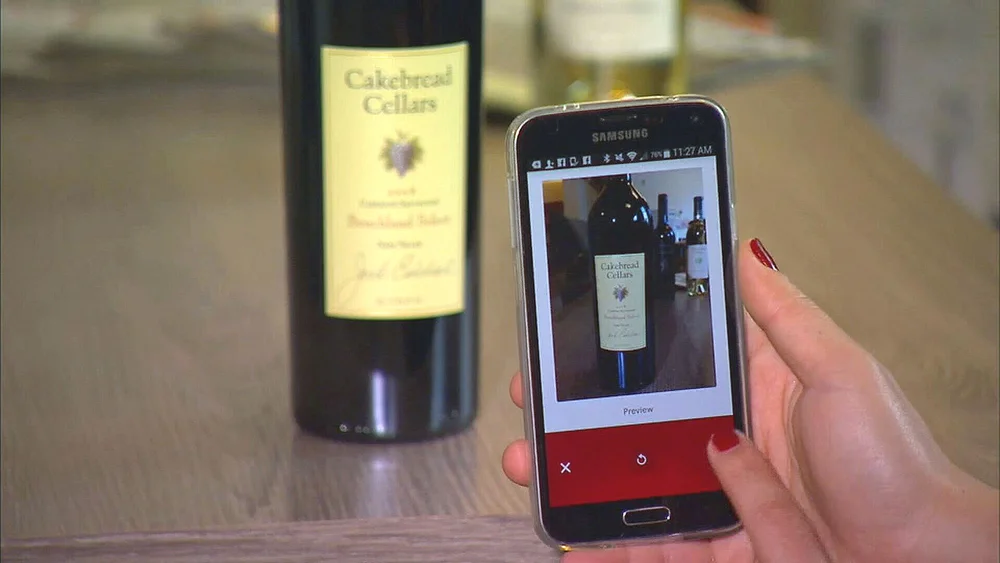
You’re out drinking wine with friends (properly social-distanced of course!) and you try a wine that truly wows you. You love it so much you’re absolutely sure you’ll remember the name of the producer and what the label looks like. But, not surprisingly, the next morning through your vinous haze you just can’t remember a darn thing about that wine! (I’ve been there too!)
This is precisely why, the moment you discover a wine that delights you, either write down the name of the wine and/or producer in the “Notes” section of your iPhone or, even better, snap a photo of it. Having that photo is your key to finding that wine again or getting something that’s very similar. So create a new folder in your photo app labeled “Wine” and, in time, you’ll develop a library of images that’ll tell the story of your unique vinous preferences. You can use this valuable information to help determine which wines you’re likely to enjoy in the future. You can also use wine apps like Delectable (my personal fave!), Wine-Searcher and Vivino that have loyal communities of wine lovers and experts to guide you as well.
This is perhaps the most important tip to vinous empowerment! In the process of discovering which wines truly make your palate sing, you’ll need a guide by your side since I can’t always be there with you (darn!). Because as you may have already discovered, many wines you read about on websites, in books or in magazines are not available at your local retail store. This is mostly due to antiquated wine laws that prevent retailers from having open access to whatever wines they want and unfortunately there’s no sign of anything changing anytime soon.
That’s why it helps to have someone who’s local and easily accessible who can reliably guide you to a similar selection in the event the wine you’re looking for isn’t available. The beauty is, over time, you’ll become more confident discussing wine and they’ll become familiar with your palate and will be able to anticipate and recommend wines you’ll like in the future based on your purchase profile with them. And I know they’ll really appreciate your business right now, and conveniently, many of them deliver now too!
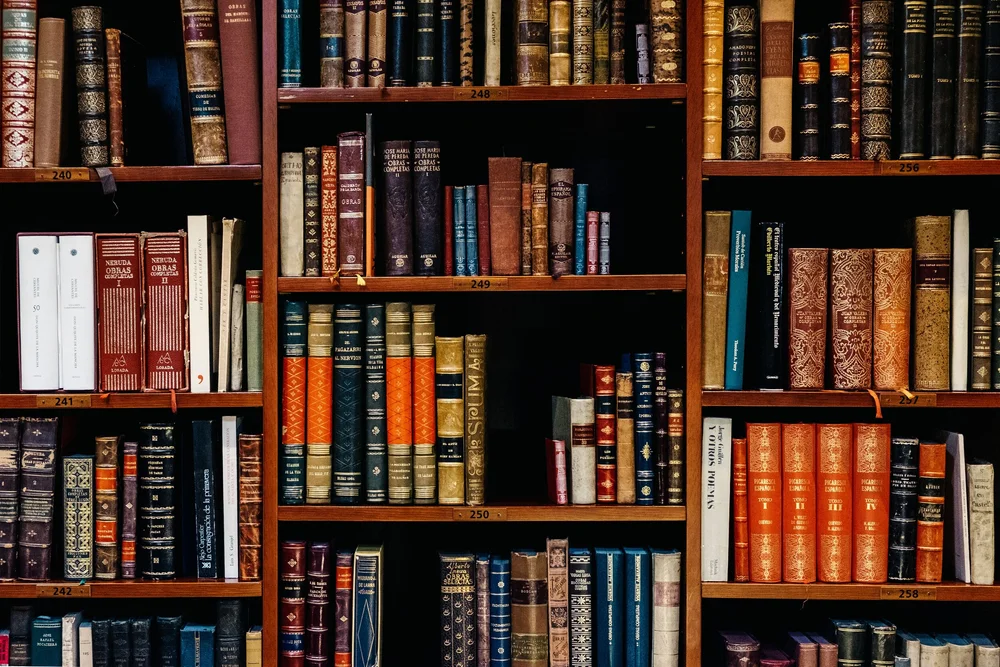
Now that we’re all supposed to be sticking closer to home, it’s the perfect time to catch up on your reading! And there’s SO many amazingly delicious wine resources to dive into. A great place to start here on my website is with my posts that cover the basics: White Wine 101, Red Wine 101 and Champagne + Sparkling Wine 101. Other resources I greatly admire in the wine world by some of my favorite experts include:
The Wine Bible ($18) by truly fabulous innovator + wine expert, Karen MacNeil. You’ll thoroughly enjoy her charismatic writing style, plus she enjoys a glass of Champagne every day of her life so I love her for that as well! You can also click here for my interview with her to learn more about her fascinating journey as one of the first female wine writers.
The Oxford Companion to Wine ($49) and Wine Grapes: A Complete Guide to 1,368 Vine Varieties ($129) by the legendary Jancis Robinson
Wine Simple: A Totally Approachable Guide from a World Class Sommelier ($20) by the uber-brilliant yet down to earth Sommelier of Le Bernardin in NYC, Aldo Sohm.
Anything written by Master Sommelier Andrea Immer Robinson.
Of course you can also listen to podcasts which are perfect if you’re on the go or pedaling away on your Peloton! Of course I highly recommend my podcast, The Wine Atelier, but some of my other favorites include Levi Dalton’s “I’ll Drink to That,” and the Guild of Sommeliers podcast.
This tip generally would have read “attend all the wine events you can afford and/or have time for,” however, given our new, altered reality, virtual tasting are definitely the way to go - and I have to say, they are fabulous! I’ve been on both the attending and delivering end of virtual tastings and the sense of conviviality you experience at an “in-person” wine tasting can definitely be achieved at virtual events as well.
Some of my favorite entities that are hosting regular “virtual” wine tastings right now include:
EATER at Home Virtual Food + Wine Events on Instagram: Updated every Monday, the Eater at Home live tastings feature some of the food and wine world’s most well-known names such as Samin Nosrat, Alex Guarnaschelli and Andrew Zimmern.
Coravin Virtual Wine Events: Headed by Greg Lambrecht, inventor of the Coravin which revolutionized the way we taste wine. He has created a nice lineup of hosts whose goal it to create special moments of connection over a glass of wine.
Corkbuzz: The fabulous NYC-based restaurant and wine bar founded by female Master Sommelier, Laura Maniec.
Charlie Palmer’s Pigs + Pinot Tutorial Series: Every Thursday @ 4pm ET Chef Palmer and a rotating lineup of prominent Sonoma winemakers for the inside scoop on our favorite pork and pinot pairings.
The Boisset Collection: The charismatic Jean-Charles Boisset hosts daily Happy Hour wine tastings on Facebook Live @ 6pm PDT where he opens bottles and takes questions from viewers.
Wine makes daily living easier, less hurried, with fewer tensions + more tolerance.
While attending virtual events and tastings is really fun and you’re probably learning something new during each one, if you really want to kick it up a notch, taking formal wine classes is the way to go!
Wine & Spirit Education Trust: WSET provides globally recognized education and qualifications in wines, spirits and sake, for professionals as well as enthusiasts. They have a variety of different levels of certification that you can start at based on your existing level of proficiency. I currently hold the WSET Advanced Certificate which involved a blind tasting of two wines and a written exam consisting of a multiple choice section and an essay paper. These courses focus on materials best suited to teaching and writing about wine since there is no service component to them. If you’re interested in working in a service capacity, check out the next organization.
The Court of Master Sommeliers: Made famous by the 2012 movie SOMM, this globally recognized organization is considered the benchmark as far as wine service goes. And while the Master Sommelier designation is the pinnacle of this organization (there are only 255 Master Sommeliers in the world!), there are three other preceding tiers of certification as well, the Intro level which is perfect for enthusiasts and those still considering a career in the wine industry, the Certified Sommelier level which is self-study only and the exam is a mini-version of the Master Somm exam, consisting of a blind tasting of two wines, a written theory portion and a service component.
The last level before the Master Sommelier is the Advanced Sommelier in which all three components of the exam, bling tasting, theory and service, must be passed at the same time and failing any one of them requires you to take the entire exam and all of its components over again.
The Institute of Masters of Wine (IMW): If the Master Sommelier is the highest certification in terms of service in the wine world, the Master of Wine is the highest level of certification in terms of academia and writing. The WSET diploma is often considered a prerequisite to being accepted into the MW program which culminates in a three-part examination, comprised of theory and practical components as well as a research paper. The theory papers touch on a comprehensive range of wine-related topics including viticulture and vinification, the business of wine and current trends in the wine industry. There are currently 394 MW’s in the world today.
Society of Wine Educators (SWE): As the title implies, this organization is focused on providing wine and spirits education along with the conferral of several certifications including the Certified Specialist of Wine (CSW), Certified Specialist of Spirits (CSS), Certified Wine Educator (CWE) and Certified Spirits Educator (CSE). The Society is internationally recognized and its programs are highly regarded for both their quality and relevance to the industry.
Wine Scholar Guild: This well-respected organization is considered the leading provider in specialized certification programs on the Old World wine regions of France, Italy and Spain with a school network spanning 30 countries and 5 continents. They’re definitely pioneers in online wine education and students learn from the best names in the wine industry. They also offer very exclusive wine study immersion programs on the market.
I hope you find these 6 essential tips for Empowering your Palate helpful and that these resources enhance your enjoyment and exploration of the wine world. Whether as a career or hobby, this is truly a topic you can easily devote your life to!
And if you’d like to receive weekly updates about the world of food and wine, simply click here to sign up for my newsletter. The GG Guide to Wine + Food will delight you with seasonally-inspired, Sommelier-curated recipes, wine recommendations, pairings and travel trips. xo